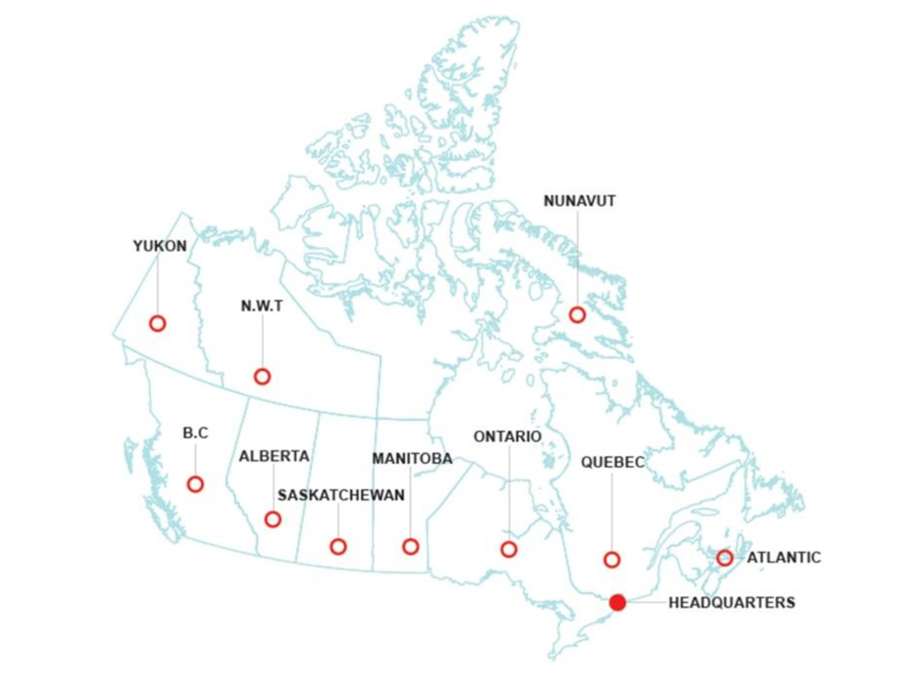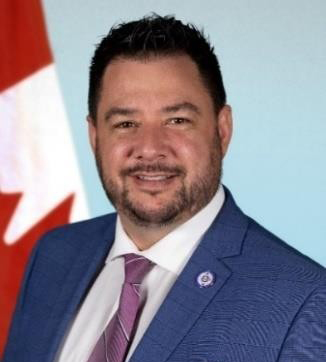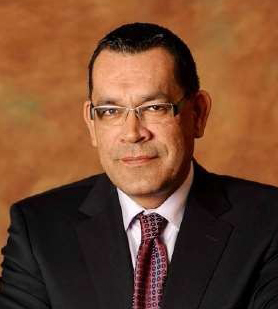Transition 2022 Deputy Minister Wilson Indigenous Services Canada Overview - Book 1
Table of contents
- Overview of Indigenous Services Canada
- Indigenous Services Canada and Crown-Indigenous Relations and Northern Affairs Canada: Division of Responsibilities
- Profiles of Indigenous Services Canada Senior Executives
- Profiles of Shared Services Senior Executives
- Indigenous Services Canada Financial Overview
- Welcome Forward
1. Overview of Indigenous Services Canada
Role of the Minister of Indigenous Services
"The Minister is to ensure that: child and family services; education; health; social development; economic development; housing; infrastructure; emergency management; and governance services are provided to eligible Indigenous individuals, communities and governing bodies." (Department of Indigenous Services Act, s.6 (2))
The Minister is to "provide Indigenous organizations with an opportunity to collaborate in the development, provision, assessment and improvement of the services" and is to "take the appropriate measure to give effect to the gradual transfer to Indigenous organizations of departmental responsibilities". (Department of Indigenous Services Act, s.7(a-b))
"The Minister must cause to be tabled in each House of Parliament, within three months after the end of the fiscal year (…) a report on:
- the socio-economic gaps between First Nations, Inuit, Métis individuals, and other Canadians and the measures taken by the Department to reduce those gaps; and
- the progress made towards the transfer of responsibilities."
(Department of Indigenous Services Act, s.15)
Overview of Services
Indigenous Services Canada (ISC) provides programs and services to First Nations, Inuit and Métis peoples, which focus on:
- keeping children and families together,
- supporting quality education,
- improving health outcomes,
- building reliable infrastructure, and enabling economic prosperity.
First Nations, Inuit and Métis covered by self-government agreements receive services directly from their Indigenous government. These relationships fall mainly under the mandate of Crown-Indigenous Relations and Northern Affairs Canada.
First Nations, Inuit and Métis
- ISC also supports a wide range of Indigenous governments and institutions who serve and represent First Nations, Inuit and Métis.
- Urban Programming for Indigenous Peoples is delivered through not-for-profit urban Indigenous service delivery organizations (i.e., Friendship Centres, Inuit and Métis organizations) and non-Indigenous organizations, including municipal governments, health and education authorities and institutions that have demonstrated support from Indigenous organizations or Indigenous community groups.
Common to First Nations and Inuit
- First Nations and Inuit communities have access to a range of services that are supplementary to those provided by the provinces and territories, including mental health and substance use services, public health services, home, community, and palliative care.
- Some services are available to First Nation individuals and Inuit regardless of residency (e.g., non-insured health benefits, access to health, social, and educational services for children through Jordan's Principle and the Inuit Child First Initiative, and post-secondary education funding).
- Inuit have self-government agreements and governance structures that allow for greater community control.
- ISC funds communities, service delivery organizations and, in some instances, delivers the services directly (e.g., nursing).
On-reserve First Nations
- ISC is involved in a wide range of services for on-reserve First Nations, similar to a province/territory or municipalities. This includes health, social, education, economic development, governance, and infrastructure services.
- In these cases, ISC's main role is one of funder, via contribution agreements, to First Nation governments and organizations who manage service delivery.
- The New Fiscal Relationship provides stabilized long-term funding to over 117 First Nations through the 10-year grant funding mechanism. This initiative aims to provide eligible First Nations, who choose to join the grant, with program supports to build capacity, do effective planning, and account for inflation and population increases on- reserve.
- The main services supported by the Department on-reserve include status registration, estates, primary care nursing, public health nurses and environmental public health, elementary and secondary education, post-secondary education, income assistance, assisted living, infrastructure such as housing, water and waste water, and education and health facilities among others.
Responding to COVID-19
- Recognizing that many Indigenous communities face unique challenges in addressing COVID-19, ISC has provided funding to help First Nations, Inuit and Métis communities, as well as urban Indigenous service delivery organizations to manage the pandemic, and to recover from the impacts of the pandemic.
- To support First Nations communities' efforts to mitigate and manage COVID-19 outbreaks on-reserve, ISC provided additional supports, including:
- COVID-19 swab sample testing;
- personal protective equipment, such as hand sanitizer, N95 masks, isolation shields, and gloves;
- deployed nurses, paramedics and provided air transportation for health human resources;
- provided funding for mobile structures, hotel or space rentals;
- provided logistics support identifying community spaces that can be upgraded or retooled; operational spaces for site servicing projects; and
- rolling out vaccination.
A National Footprint
National Capital Region
- The National Capital Region (NCR) office of Indigenous Services Canada plays an important role in defining the general policy direction of the department.
- It also maintains relationships with Indigenous organizations located in the National Capital Region, including the Assembly of First Nations, Inuit Tapiriit Kanatami, the Métis National Council, the Congress of Aboriginal Peoples, and the Native Women's Association of Canada.
Regional Offices
- The regional offices of ISC are the face of the Department in direct work with Indigenous communities.
- Located in all continental provinces, the Atlantic region, and in some northern regions (Northwest Territories and Yukon), they maintain day-to-day relationships with a wide web of Indigenous organizations and governments at the local and regional levels.
- ISC offices are also responsible to ensure that programs are appropriately implemented.

Text alternative for A National Footprint
Map of Canada showing ISC Headquarters, as well as regional offices (Atlantic, Quebec, Ontario, Manitoba, Saskatchewan, Alberta, British Columbia, Yukon, North West Territories, and Nunavut).
Legislative Environment
Constitution Act, 1982
- Section 91(24) provides the Government of Canada with jurisdiction over "Indians and lands reserved for Indians".
- Section 35 recognizes and affirms "Aboriginal and treaty rights".
Department of Indigenous Services Act
- Came into force in July 2019.
- Outlines the powers, duties and functions of the Minister of Indigenous Services. It directs the Minister to ensure programs and services are delivered to eligible Indigenous individuals and emphasizes the objectives of closing socio-economic gaps between Indigenous Peoples and other Canadians, and of building capacity of Indigenous communities to support self-determination.
- The legislation notably includes:
- the different types of services provided to eligible Indigenous individuals (i.e., child and family services; education; health; social development; economic development; housing; infrastructure; emergency management; and governance);
- responsibilities to ensure that Indigenous organizations can collaborate in the development, provision, assessment and improvement of services.
- a ministerial power to enter into agreements with Indigenous organizations to transfer departmental responsibilities.
Indian Act
- Regulates the relationship between Canada and First Nations in a wide range of areas.
- For the purposes of this Act, the Minister of Indigenous Services is the Superintendent General of Indian affairs.
Legislation for which the Minister of Indigenous Services is responsible
- An Act respecting First Nations, Inuit and Métis children, youth and families
- Indian Act Amendment and Replacement Act
- First Nations Elections Act
- Indian Oil and Gas Act
- First Nations Oil and Gas and Moneys Management Act
- First Nations Commercial and Industrial Development Act
- Family Homes on Reserves and Matrimonial Interests or Rights Act
- Safe Drinking Water for First Nations Act
- Saskatchewan Treaty Land Entitlement Act
- Kanesatake Interim Land Base Governance Act
Influencing Legislation
- United Nations Declaration on the Rights of Indigenous Peoples Act
- Indigenous Languages Act
- First Nations Financial Transparency Act
- Addition of Lands to Reserves and Reserve Creation Act
- First Nations Fiscal Management Act
- First Nations Land Management Act
- Dominion Water Power Act
ISC Portfolio Organizations
Indian Oil and Gas Canada
- Indian Oil and Gas Canada (IOGC) is an organization committed to managing and regulating oil and gas resources on First Nation reserve lands. It is a special operating agency under ISC.
- Indian Oil and Gas Canada Vision: To become a modern regulator of First Nations oil and gas resources.
- Indian Oil and Gas Canada's general responsibilities are to:
- identify and evaluate oil and gas resource potential on Indian reserve lands;
- encourage companies to explore for, drill and produce these resources through leasing activity;
- ensure equitable production, fair prices and proper collection of royalties on behalf of First Nations; and
- secure compliance with and administer the regulatory framework in a fair manner.
ISC Ministerial Advisory Board
National Indigenous Economic Development Board
- The National Indigenous Economic Development Board's (NIEDB) mission is to advise the Minister of Indigenous Services and other federal Ministers on policies, programs, and program coordination as they relate to Indigenous economic development.
- National Indigenous Economic Development Board Vision: A vibrant Indigenous economy, where Indigenous Peoples are economically self-sufficient and have achieved economic parity with Canadian society.
- The Board is comprised of First Nations, Inuit, and Métis business and community leaders from across Canada. It helps governments respond to the unique needs and circumstances of Indigenous Peoples in Canada.
Annex A: History of Indigenous Service Delivery
First Nations and Inuit Health Branch
- 1904 – Medical programs and health facilities for Indians were developed in response to smallpox outbreak.
- 1974 – Minister of National Health and Welfare tabled "Policy of the Federal Government Concerning Indian Health Services."
- Mid-1980's – Work was undertaken to transfer the control of health services to First Nations and Inuit communities and organizations through the Strategic Policy, Planning and Analysis Directorate at Health Canada (renamed First Nations and Inuit Health Branch in 2000).
- In response to the Royal Commission on Aboriginal Peoples, the federal government announced Gathering Strength—Canada's Aboriginal Action Plan, which committed to addressing chronic illnesses of Indigenous Peoples, the development of Aboriginal Healing Foundation, and a healing strategy that addresses the legacy of Indian Residential Schools in partnership with the Department of Indian Affairs and Northern Development.
- Work continues toward the transfer of health services to communities (i.e. British Columbia First Nations Health Authority).
- Efforts remain ongoing to implement orders issued from the Canadian Human Rights Tribunal regarding the implementation of Jordan's Principle.
Schooling and Education
- 1830s – saw the introduction of Indian Residential Schools.
- 1940 – policy of education integration was introduced, enabling Indigenous students to attend provincial school. Issues with this approach included a lack of specialized training to teach Indigenous students and the fact that schools were often located far from students' homes.
- 1972 – the National Indian Brotherhood (later became the Assembly of First Nations) policy on Indian Control of Indian Education was adopted by the Department of Indian Affairs and Northern Development.
- 1970's – began to address the importance of local community control to improve education, identified the need for more Indigenous teachers and the development of relevant curricula.
- Recent efforts have contributed to federal and provincial legislation that formalizes the local jurisdiction for First Nations communities (i.e. Nisga'a Education Act, Mi'kmaq Education Act).
- Work remains ongoing, in collaboration with Indigenous partners, towards distinctions- based post-secondary education strategies.
Community Infrastructure
- Canada provides funding and technical support for community infrastructure. First Nations communities are responsible for the procurement, construction, and operations and maintenance of their community infrastructure.
- Underfunding for community infrastructure on-reserve has resulted in poor living conditions (e.g., overcrowding in homes, mold infestations).
- The Government of Canada has made significant progress in recent years towards improving access to clean drinking water and ending long-term drinking water advisories in First Nations communities. An action plan is in place and initiatives are underway to address all remaining long-term advisories.
- As per the Department of Indigenous Services Act (2019), ISC is working with Indigenous partners on the development, provision, assessment and improvement of infrastructure services, with the ultimate goal, of the transfer of control of infrastructure services to Indigenous organizations.
Child and Family Services
- 1950s – an amendment to the Indian Act allowed governments to provide child welfare services on-reserve which resulted in the Sixties ScoopFootnote 1.
- 2007 – the Enhanced Prevention Focused Approach to Child and Family Services (EPFA) was introduced.
- 2016 – the Canadian Human Rights Tribunal ruled funding provided for on-reserve child and family services programming was discriminatory.
- June 2019 – Bill C-92, affirming and recognizing Indigenous Peoples' jurisdiction over child and family services was enshrined into law. The Government of Canada signed a coordination agreement with the Cowessess First Nations in Saskatchewan on July 6, 2021.
- Efforts remain ongoing to work with Indigenous partners to reform the First Nations Child and Family Services (FNCFS) program, which funds prevention and protection services for First Nations children and families living on-reserve.
Governance
- 1980s – Indian Government support programs were created to aid organizations in undertaking administrative control over departmental programs. They are now known as the Indigenous Governance and Capacity programs and are currently available for communities.
- New guiding principles, created through the Indigenous Community Development National Strategy (2018), emphasize the need for community governance to: be community-driven, be nation-based, include the recognition of diversity, invest in capacity building, planning and implementation, and be flexible and responsive.
- Governance tools have been developed for communities and institutions to support their process in self-determination.
- ISC is co-developing a policy framework that paves the way for transferring infrastructure service delivery to First Nation partners. The framework encompasses the process and requirements for service transfer to ensure ISC staff and First Nations communities understand the implications of the transfer of control and accountabilities for infrastructure service delivery.
2. Indigenous Services Canada and Crown-Indigenous Relations and Norther Affairs Canada: Division of Responsibilities
Indigenous Services Canada's (ISC) primary responsibilities are the delivery of services and programs to Section 91(24) Indigenous communities, with a particular emphasis on closing the socio-economic gap between Indigenous Peoples and non-Indigenous Peoples and building up the capacity of Indigenous communities so that they have the means and ability to move forward on the path to self-determination.
Crown-Indigenous Relations and Northern Affairs Canada's (CIRNAC) primary responsibilities are to guide and coordinate the whole-of-government relationship with Section 35 rights holders and Indigenous nations; to reach and implement agreements to accelerate self-determination (through self-government and land claim agreements, including reconstituting nations); and to manage northern programing and Arctic Policy.
ISC Responsibilities (lead sector)
- Indigenous Health (First Nations and Inuit Health Branch)
- Housing and Infrastructure (Regional Operations Sector)
- Education (Education and Social Development Programs and Partnerships Sector)
- Social Services (Education and Social Development Programs and Partnerships Sector)
- Child and Family Services (Education and Social Development Programs and Partnerships Sector)
- Indian Status (Regional Operations Sector)
- Governance, Bylaws and First Nations Election Act (Lands and Economic Development Sector)
- Economic Development (Lands and Economic Development Sector)
- Economic Policy
- Aboriginal Entrepreneurship and Business Development
- National Indigenous Economic Development Board
- Matrimonial Real Property
- Lands under the Indian Act (Lands and Economic Development Sector)
- Environmental management (Lands and Economic Development Sector)
- Indian Oil and Gas Canada and First Nations Oil and Gas Management Act (Lands and Economic Development Sector)
- Evaluation (Strategic Policy and Partnerships Sector)
- Emergency Management (Regional Operations Sector)
- Fiscal Arrangements (Strategic Policy and Partnerships Sector)
Shared Internal Service housed in ISC
- Legislative, Parliamentary and Regulatory Affairs (Strategic Policy and Partnerships Sector)
- Strategic Research (Strategic Policy and Partnerships Sector)
- Communications (Deputy Minister's Office)
- Information Management / Information Technology and Departmental Library (Chief Financial and Results Delivery Officer Sector)
CIRNAC Responsibilities (lead sector)
Crown-Indigenous Relations
- Permanent Bilateral Mechanisms (Policy and Strategic Direction Sector)
- Inuit and Métis Housing (Policy and Strategic Direction Sector)
- Recognition and Implementation of Rights Framework (Treaties and Aboriginal Government Sector)
- Land Claims Negotiations (Treaties and Aboriginal Government Sector)
- Modern Treaty and Self-Government negotiations (Treaties and Aboriginal Government Sector)
- Specific Claims (Treaties and Aboriginal Government Sector)
- Treaty implementation (Implementation Sector)
- Residential Schools Resolution (Resolution and Partnerships Sector)
- First Nations Financial Management Act (Resolution and Partnerships Sector)Footnote 2
- First Nations Land Management Act (Resolution and Partnerships Sector)Footnote 2
- Additions to Reserves (Resolution and Partnerships Sector)Footnote 2
- Audit (Deputy Minister's Office)
Northern Affairs (Northern Affairs Organization)
- Territorial governments
- Devolution
- Arctic and Northern Policy Framework
- Arctic Science
- Nutrition North
- Polar Knowledge Canada
- Contaminated sites
Shared Internal Service housed in CIRNAC
- Human Resources
- Cabinet Affairs (Policy and Strategic Direction)
3. Profiles of Indigenous Services Canada Senior Executives
- Associate Deputy Minister
- Regional Operations
- Regional Offices South of 60°
- Chief Finances, Results and Delivery Officer
- First Nations and Inuit Health Branch
- Regional Operations, First Nations and Inuit Health Branch
- Child and Family Services Reform
- Education and Social Development Programs and Partnerships
- Strategic Policy and Partnerships
- Lands and Economic Development
- Indian Oil and Gas Canada
- Corporate Secretariat

Text alternative for Indigenous Services Canada Senior Executives
A chart showing the organizational structure of Indigenous Services Canada.
- Minister of Indigenous Services
- Deputy Minister: Christiane Fox
- Associate Deputy Minister: Valerie Gideon
- Regional Operations: Joanne Wilkinson, Senior ADM
- Regional Offices (South of 60°)
- First Nations and Inuit Health Branch: Patrick Boucher, Senior ADM
- Regional Operations, First Nations and Inuit Health Branch: Keith Conn, ADM
- Regional Offices (First Nations and Inuit Health Branch)
- Chief Finances, Results and Delivery Officer: Philippe Thompson
- Child and Family Services Reform: Catherine Lappe, ADM
- Lands and Economic Development: Kelley Blanchette, ADM
- Indian Oil and Gas Canada: Strater Crowfoot, Executive Director and CEO
- Strategic Policy and Partnerships: Danielle White, ADM
- Corporate Secretariat: Kyle McKenzie, Corporate Secretary
- Education and Social Development Programs and Partnerships: David Peckham, ADM
- Regional Operations: Joanne Wilkinson, Senior ADM
Common Services to ISC and CIRNAC
- Human Resources and Workplace Services: Maryse Lavigne, DG
- Audit and Evaluation: Stephanie Barozzi, Chief Audit and Evaluation Executive
- Communications: Aruna Sadana, ADM
- Legal Services: Marie Bourry, Senior General Counsel
Associate Deputy Minister

Telephone number: (613) 219-4104
In September 2020, Valerie Gideon was appointed Associate Deputy Minister of Indigenous Services Canada.
Prior to her appointment, Valerie held the position of Senior Assistant Deputy Minister for the First Nations and Inuit Health Branch (FNIHB) since April 2018, having acted in that position since December 2017. Prior to that role, Valerie was Assistant Deputy Minister, Regional Operations, FNIHB. In 2011–2012, she was Director General, Strategic Policy, Planning and Analysis at FNIHB. From 2007 to 2010, she held the position of Regional Director for First Nations and Inuit Health Branch, Ontario Region, Health Canada. Prior to working at Health Canada, her experience consisted mainly of working in First Nations health advocacy as Senior Director of Health and Social Development at the Assembly of First Nations and Director of the First Nations Centre at the National Aboriginal Health Organization. She was named Chair of the Aboriginal Peoples' Health Research Peer Review Committee of the Canadian Institutes of Health Research in 2004.
Valerie graduated from McGill University (Montreal) in 2000 with a Ph.D. (Dean's List) in Communications (dissertation pertaining to telehealth and citizen empowerment). She previously completed a Masters of Arts in 1996 at McGill. She is a founding member of the Canadian Society of Telehealth and former Board member of the National Capital Region YMCA/YWCA. Valerie is a member of the Mi'kmaq Nation of Gesgapegiag, Quebec, Canada.
Regional Operations

Title: Senior Assistant Deputy Minister
Telephone number: (613) 415-5423

Title: Associate Assistant Deputy Minister
Telephone number: (613) 371-2149
Overview
Regional Operations is responsible for the delivery of national programs and services through seven south of 60° regional offices. Programs include those offered by the Education and Social Development Programs and Partnership Sector as well as the Lands and Economic Development Sector.
Regional Operations is also responsible for managing three national programs, which include Governance Capacity, Community Infrastructure and Emergency Management.
Governance Capacity
Governance Capacity provides funding for band governance and administration: funding to eligible First Nations, Inuit or Innu employers to support pension and benefit plans; core funding to Tribal Councils; and targeted funds to governance capacity development projects. This funding is intended to support Indigenous communities and institutions in the implementation of strong and sustainable governments.
Community Infrastructure
Community Infrastructure works with First Nations governments to support affordable and adequate housing; the provision of clean, safe and reliable drinking water and the effective treatment of wastewater on First Nations lands; the provision of safe schools; and other community infrastructure essential to healthy, safe, and prosperous communities, such as roads and bridges.
Emergency Management
The Emergency Management Assistance Program supports the health and safety of on-reserve First Nations residents as well as their lands and critical infrastructure. This program promotes a four pillar approach to emergency management: mitigation; preparedness; response; and recovery. ISC promotes efficiency by accessing existing resources and services of provinces and territories and emergency management partners to address on-reserve emergencies and reimburses these partners for eligible expenses.
Regional Offices South of 60°
Atlantic Region

Title: Regional Director General
Telephone number: (902) 397-0207
Alberta Region

Title: Regional Director General
Telephone number: (780) 554-4699
British Columbia Region

Title: Regional Director General
Telephone number: (604) 355-3018
Saskatchewan Region

Title: Regional Director General
Telephone number: (306) 536-9929
Manitoba Region

Title: Regional Director General
Telephone number: (204) 430-6768
Ontario Region

Title: Regional Director General
Telephone number: (613) 794-0014
Quebec Region

Title: Regional Director General
Telephone number: (418) 951-2281
Chief Finances, Results and Delivery Officer

Title: Chief Finances, Results and Delivery Officer
Telephone number: (613) 355-0247
Overview
The Chief Finances, Results and Delivery Officer Sector is responsible for providing leadership and ensuring effective management of departmental resources within the legislative mandate. The Sector also provides strategic advice, oversight, and support to the Deputy Minister and the senior executive team to ensure integrity and sound financial controls and management in the planning and operations of Indigenous Services Canada (ISC).
The Sector is responsible for establishing the planning framework for ISC that aligns the mandated outcomes and departmental strategic priorities with resource management via the Departmental Results Framework. The Chief Finances, Results and Delivery Officer leads the reporting to Cabinet and Parliament on outcomes through the Departmental Plan and Departmental Report and the implementation of the Minister's mandate letter commitments.
The Chief Finances, Results and Delivery Officer Sector supports delivery of services through policies, directives and other activities in the areas of financial planning and analysis, accounting and reporting, contracting and procurement, assets and materiel and information management.
The Chief Finances, Results and Delivery Officer is responsible for ISC's Chief Information Officer functions that include information management and technology services, investments structures and controls within ISC, to leverage Information Management and Information Technology reliably, securely, and cost effectively to support effective and efficient business process design and execution.
The Sector is accountable for providing grants and contributions advisory and support services through policies, directives and other activities, including the development of national funding agreements models and guidelines; the establishment of funding agreement service standards; the management of the Grants and Contributions Information Management System; and the national monitoring, compliance and reporting.
In the context of transformation of the Indigenous policy and service space, the Chief Finances, Results and Delivery Officer plays a key role in elaborating and monitoring arrangements, including service level agreements for shared internal services while participating as a service lead in the finance and corporate management space and as a client for those services provided by its sister-department, Crown Indigenous- Relations and Northern Affairs Canada.
First Nations and Inuit Health Branch

Title: Senior Assistant Deputy Minister
Telephone number: (613) 946-4884
Overview
Indigenous Services Canada works with First Nations, Inuit, other federal departments and provincial and territorial partners to support healthy First Nation and Inuit individuals, families and communities. Working with partners, the Branch strives to improve health outcomes, provide access to quality health services and support greater control of the health system by First Nations and Inuit.
Subjects
- Coronavirus and Indigenous communities
- Indigenous health care in Canada
- Diseases that may affect First Nations and Inuit communities
- Indigenous mental health and substance use
- Non-Insured Health Benefits for First Nations and Inuit
- Co-developing distinctions-based Indigenous health legislation
- Health care services for First Nations and Inuit
- Family Health
- Environmental issues and Indigenous health
In recent years, First Nations and Inuit health has improved; however, gaps remain in the overall health status of First Nation and Inuit when compared to other Canadians. ISC's FNIHB works with numerous partners to carry out many activities aimed at helping people stay healthy and promoting wellness.
On this shared path to improved health, the Branch funds or delivers:
- Community-based health promotion and disease prevention programs;
- Primary, home and community care services;
- Programs to control communicable diseases and address environmental health issues; and
- Non-insured health benefits to supplement those provided by provinces, territories; and private insurer.
Regional Operations, First Nations and Inuit Health Branch (FNIHB)

Title: Assistant Deputy Minister
Telephone number: (613) 204-8698
FNIHB Regional Executives
Atlantic Region

Title: Regional Executive
Telephone number: (613) 946-8104
Quebec Region

Title: Regional Executive
Telephone number: (514) 260-2058
Ontario Region

Title: Regional Executive
Telephone number: (437) 777-5275
Manitoba Region

Title: Regional Executive
Telephone number: (204) 227-8238
Saskatchewan Region

Title: Regional Executive
Telephone number: (306) 203-4580
Alberta Region

Title: Regional Executive
Telephone number: (780) 495-6459
Northern Region

Title: Regional Executive
Telephone number: (613) 301-5984
Child and Family Services Reform

Title: Assistant Deputy Minister
Telephone number: (604) 340-7703
Overview
In March 2018, ISC created the Child and Family Services Reform Sector in order to address the over-representation of Indigenous children and youth in care in Canada. The Sector is guided by the government's commitment to six points of action following a two-day Emergency Meeting on Indigenous Child and Family Services held in
January 2018 with Indigenous partners, provincial and territorial representatives, youth, experts and advocates:
- continuing to fully implement the orders from the Canadian Human Rights Tribunal, and reform First Nations child and family services program to make it truly child-centered and community-directed;
- working with partners to shift the focus of programming to culturally appropriate prevention, early intervention, and family reunification;
- supporting communities to exercise jurisdiction and working with partners to implement child and family services legislation;
- accelerating the work at tripartite and technical tables that are in place across the country to support reform;
- supporting Inuit and Métis Nation leadership in their work to advance meaningful, culturally appropriate reform of child and family services; and
- developing a data and reporting strategy with provinces, territories and Indigenous partners.
The Child and Family Services Reform Sector ensures the full implementation of the orders by the Canadian Human Rights Tribunal related to child and family services, and works with partners on implementing the co-developed An Act respecting First Nations, Inuit and Métis children, youth and families, which came into force on January 1, 2020.
Education and Social Development Programs and Partnerships

Title: Assistant Deputy Minister
Telephone number: (613) 894-4239
Overview
The Education and Social Development Programs and Partnerships Sector is responsible for social and education programs.
The Sector works to strengthen both policy and program management functions, including program compliance and national consistency, and to monitor program performance and effectiveness for two of ISC's largest program areas: Education and Social Development.
The Sector's mandate is twofold:
- to provide First Nation men, women, children and families with the supports necessary to help them achieve education outcomes comparable to those of other Canadians; and
- to assist eligible on-reserve residents to foster greater self-reliance, improve quality of life, reduce or eliminate family violence, and participate more fully in Canada's economic opportunities.
The Sector is closely linked with eight regional offices (seven South of 60° and one in the Yukon) and the Regional Operations Sector.
Education related programs and services are delivered in collaboration with partners including First Nations regional education organizations and provinces. Other federal departments, particularly Human Resources and Skills Development Canada, are also partners in funding and delivering education-related programs and services.
Social programs and services are delivered in collaboration with First Nation organizations, provinces, territories and other federal departments. These partners includes: Health Canada, Human Resources and Skills Development Canada, Canada Mortgage and Housing Corporation, the Public Health Agency of Canada, provincial and territorial governments, the Assembly of First Nations, and others.
Strategic Policy and Partnerships

Title: Assistant Deputy Minister
Telephone number: (613) 884-3697
Overview
The Strategic Policy and Partnerships Sector of ISC was established to support ISC sectors in the improvement and transfer of Indigenous services to Indigenous Peoples, for Indigenous Peoples, by Indigenous Peoples. The Strategic Policy and Partnerships Sector serves as an internal driver of change by supporting ISC sectors in improving services and enabling Indigenous control.
The Sector includes the following branches:
- Strategic Policy
- Provides strategic policy analysis and advice in fulfillment of the Minister's mandate, ISC's transformation agenda, and federal policy direction.
- Evaluation and Policy Re-Design
- Identifies innovative policy interventions and partnerships to improve and transfer services, and evaluate the success of transferred services through an Indigenous lens.
- Strategic Research and Data Innovation
- Provides a robust and innovative evidence base for decision making to ensure that new and redesigned policy initiatives reflect Indigenous ways of knowing and doing. Examines long-term trends and undertake forecasting to keep ahead of emerging issues and identify challenges and opportunities.
- Fiscal Arrangements
- Works to address longstanding challenges in how Indigenous services are funded and how funding relationships are managed with a long-term agenda.
Lands and Economic Development

Title: Assistant Deputy Minister
Telephone number: (613) 447-2462
Overview
The Lands and Economic Development Sector manages a suite of programs, legislation and relationships with Indigenous organizations that together promote entrepreneurship, build economic development capacity and foster the creation of wealth. Lands and Economic Development also leads the administration of reserve land and supports environmental protection on reserve, both critical elements related to stimulating economic development.
Lands and Economic Development consists of three branches: Economic Policy Development Branch, which provides policy options/direction and coordination for the sector; Economic Business Opportunities, which administers proposal-driven programs for economic development projects; and Lands and Environmental Management, which works with First Nations and First Nation organizations on the administration of lands, the expansion of reserve lands through additions to reserve, the remediation of contaminated sites and the management of waste sites on-reserve. Lands and Economic Development also oversees a special operating agency (Indian Oil and Gas Canada), responsible for the management and regulation of oil and gas development of reserve lands.
The Sector also works with institutions, such as the Lands Advisory Board and the First Nations Land Management Resource Centre to improve First Nations lands and environmental governance, and leads lands modernization initiatives to improve existing legislation and regulations. Additionally, the Sector undertakes research and analysis to support policy development, fosters partnerships with stakeholders and coordinates a whole-of-government approach on Indigenous economic development. All sector efforts contribute to the ultimate goal of increasing the participation of Indigenous Peoples in the economy.
Regional offices across Canada implement Lands and Economic Development's programming and services and carry out the administration of the Crown's statutory and fiduciary obligations under the Indian Act. While the regions get their direction from Lands and Economic Development in terms of the activities that they perform to promote lands and economic development, they formally report to the Regional Operations Sector.
Indian Oil and Gas Canada

Title: Executive Director and Chief Executive Officer
Telephone number: (403) 852-1890
Overview
IOGC manages and regulates oil and gas resources on designated First Nation lands across Canada. We are a special operating agency within Indigenous Services Canada. Our dual mandate is to fulfill the Crown's fiduciary and statutory obligations related to the management of oil and gas resources on First Nation lands and to further First Nation initiatives to manage and control their oil and resources such as governance.
Indian Oil and Gas Canada is responsible for:
Assisting First Nations with designated reserve lands in the oil and gas process through the following activities:
- Negotiation, issuance, and administration of agreements between the Crown, First Nations and oil and gas companies
- Conduct of environmental screenings and other environmental stewardship activities;
- Monitoring and verification of oil and gas production and sales prices
- Verification, assessment, and collection of moneys such as bonuses, royalties and rents
- Ensuring that all legislative and contract requirements are met
IOGC works closely with Chiefs and Councils. Band Council approval is required for all deals.
We operate pursuant to the Indian Oil and Gas Act, RSC 1985, c I-7, and Indian Oil and Gas Regulations, SOR/2019-196. We also operate under federal legislation such as the Indian Act, the Impact Assessment Act, the Financial Administration Act, and other relevant federal and provincial legislation.
We provide these services at no cost to First Nations.
Corporate Secretariat

Title: Corporate Secretary
Telephone number: (613) 793-4691
Overview
The Corporate Secretariat provides executive services to the Minister's Office, the Deputy Ministers' Offices, the Associate Deputy Ministers' Offices, as well as delivering key corporate functions across ISC. The Secretariat supports ISC on four key areas:
Executive Services Operations: comprised of three divisions responsible for coordinating and reviewing correspondence and briefing materials for the Deputy Ministers and the Minister:
- Officials Trips Directorate (MinTrips): works with the Minister's Offices, sectors, regions and Communications to ensure horizontal coordination of Ministerial trip planning. Ensures a strategic, coherent, and consistent approach in the development of material for, and in follow up to trips;
- Ministerial Correspondence Directorate: reviews and provides final quality control for briefing notes and correspondence to the Minister and Deputy Ministers, as well as oversight for departmental processes and practices associated with correspondence; and
- Governance and Planning Coordination: responsible for the coordination of material for ministerial briefings, invitations, transition, portfolio coordination, and final documentation preparation for additions to reserve.
Planning and Resource Management Directorate: responsible for providing administrative support services for the Minister's Office, Deputy Ministers' Offices, and the Corporate Secretariat, including business planning, finance, human resources, and contracting services.
Indigenous Employee Secretariat: Supports the work done by Indigenous Advisory Circles and Indigenous employee networks and serves as an information centre through which Indigenous and non-Indigenous employees can enquire about various Indigenous related programs, initiatives and events.
Access to Information and Privacy Directorate (shared service with Crown-Indigenous Relations and Northern Affairs Canada): receives all access to information and privacy requests and, working with sectors and regions, compiles the appropriate responses in accordance with the requirements of the Access to Information Act and Privacy Act.
4. Profiles of Shared Services Senior Executives
Communications

Title: Assistant Deputy Minister
What We Do
The Communications Branch's mandate is to support the government in advancing its Indigenous agenda. This includes:
- informing Canadians about ISC's work, in an accessible way;
- maintaining an open flow of information with First Nations, Inuit and Métis;
- positively influencing public perceptions of Indigenous peoples and related issues; and
- ensuring coherence and consistency in messaging aligned with government priorities.
Currently, the communications branch is a shared internal service, with most of its staff serving both ISC and Crown-Indigenous Relations and Northern Affairs Canada.
Human Resources and Workplace Services

Title: Director General
What We Do
- Human Resources Management
- Security
- Accommodations
- Informal Conflict Resolution
Top Key Current Files
- Support transformation by providing client-focused advice and efficient HR Services.
- Minimize Phoenix Pay System impacts on employees and support HR-to-Pay stabilization.
- Assist in the implementation of the Workplace Well-being and Mental Health Strategy to help foster a culture of respect, diversity and inclusion.
- Attract, recruit, develop and retain an Indigenous Workforce.
Audit

Title: Chief Executive
What We Do
The Sector supports ISC senior management by:
- Conducting internal audits, risk assessments and investigations to ensure the appropriate use of human and financial resources and that services delivered by ISC are relevant, efficient and effective.
- Serving as secretariat for the Departmental Audit Committee and as external audit liaison to the Office of the Auditor General.
- Delivering actionable products, services and advice relating to internal audit, evaluation and risk.
Top Key Current Files
- Conducting internal audit and evaluation projects covering areas such as Jordan's Principle, education, water and wastewater, as well as various social and health programs.
- Developing the ISC Corporate Risk Profile and the Departmental Integrated Risk Framework.
- Conducting a departmental fraud risk assessment and working with First Nations on managing the risk of fraud.
Justice Canada, Aboriginal Affairs Portfolio, Legal Services Unit

Title: Senior General Counsel and Head of Legal Services
What We Do
- The Legal Services Unit (LSU) provides a range of legal and strategy legal policy advisory services to Indigenous Services Canada (ISC) and Crown-Indigenous Relations and Northern Affairs Canada (CIRNAC)
- With respect to ISC:
- LSU ensures that through its advisory work that ISC's policies, litigation positions and legislative initiatives meet its policy and business needs
- LSU also provides legal and legal policy advice to ensure that ISC's programs align with broader government priorities
5. Indigenous Services Canada Financial Overview
June 2022
Table of contents
Purpose
- This provides an overview of Indigenous Services Canada (ISC) financial position for 2022-23 by providing information on additional funding that was received through the department's Main Estimates, Budget 2022 and the Supplementary Estimates (A). It also provides the Preliminary Year End Results for fiscal year 2021-22.
Main Estimates 2022-23 and Multi-Year Trends
Key Messages
| A | B | C | D | D – BTable note * | D – CTable note * | ETable note * | D x ETable note * | |
|---|---|---|---|---|---|---|---|---|
| Budgetary Voted | 2020-21 Expenditures | 2021-22 Main Estimates | 2021-22 Estimates to Date | 2022-23 Main Estimates | Main Estimates 2021-22 vs. 2022-23 | Estimates to Date 2021-22 vs. Main Estimates 2022-23 | 2022-23 Interim Supply | |
| 1 - Operating expenditure | 2,071,838,085 | 2,095,935,733 | 2,869,126,030 | 24,714,136,043 | 22,618,200,310 | 20,845,010,013 | 3/12 | 6,178,534,011 |
| 5 - Capital expenditure | 6,053,885 | 6,115,242 | 15,926,065 | 5,983,854 | (131,388) | (9,942,211) | 11/12 | 5,485,200 |
| 10 - Grants and contributions | 12,503,003,011 | 11,283,347,845 | 17,711,090,891 | 14,745,696,586 | 3,462,648,741 | (2,965,394,305) | 9/12 | 11,059,272,440 |
| Total Voted | 14,580,894,981 | 13,385,398,820 | 21,596,142,986 | 39,465,816,483 | 26,080,417,663 | 17,869,673,497 | 17,243,291,651 | |
| Total Statutory | 1,772,350,535 | 120,698,576 | 171,298,849 | 135,803,760 | 15,105,184 | (35,495,089) | ||
| Total Budgetary | 16,353,245,516 | 13,506,097,396 | 21,767,441,835 | 39,601,620,243 | 26,095,522,847 | 17,834,178,408 | ||
|
||||||||
|
||||||||
Year-Over-Year Major Changes
The net increase in budgetary spending is approximately $26.1 billion or 193% over the 2021-22 Main Estimates. The major changes include:
- an increase of $22.0 billion for out-of-court settlements;
- a net increase of $1.2 billion for infrastructure in Indigenous communities and improvements for access to safe, clean drinking water in First Nation communities;
- an increase of $646.8 million for First Nations Child and Family Services, Canadian Human Rights Tribunal orders implementation and non-compliance motion settlement;
- a net increase of $536.7 million for non-insured health benefits for First Nations and Inuit;
- a net increase of $377.6 million for the continued implementation of Jordanʼs Principle and supporting the Inuit Child First Initiative;
- a net increase of $350.3 million for elementary and secondary education as well as post-secondary education programs, including COVID-19 funding;
- a net increase of $343.9 million related to the Income Assistance program;
- a net increase of approximately $256.4 million for Indigenous early learning and child care;
- an increase of $211.8 million for mental health and wellness;
- an increase of $132.8 million to improve health outcomes in Indigenous communities (Budget 2021);
- a decrease of $122.6 million due to the sunset of funding for supportive care in Indigenous communities (COVID-19); and
- a net increase of $138.0 million for a large number of initiatives with changes in the approved funding levels.
Explanation of Expenditures by Category and Key Initiative

Text alternative for 2022-23 Main Estimates
Values presented in the pie chart:
- Out-of-court Settlements: $22,043 (56%)
- Direct Health Services and Benefits / Federal Teachers / Statutory Costs: $2,040 (5%)
- Program Management and Delivery: $520 (1%)
- Administrative Overhead: $214 (1%)
- Transfer Payments: $14,779 (37%)
- Capital: $6 (0%)
| Operating Total = $24,817M | Transfer Payment Total = $14,779M | ||
|---|---|---|---|
| Comprised of: | Amount | Comprised of: | Amount |
| Vote 1 – Operating expenditures | 24,714 | Vote 10 – Grants and Contributions | 14,746 |
| (S) Employee benefit plans | 101 | (S) Indian Annuities Treaty payments | 2 |
| (S) Loan guarantees | 2 | (S) Canada Community-Building Fund | 31 |
| Total | $24,817 | Total | $14,779 |
| Capital Total = $6M | |||
To be reconciled to the 2022-23 Main Estimates page 11-84 (Note: total Statutory (S) of $136M is comprised of about $103M in Operating and $33M in Transfer Payments.) Note: Figures may not add due to rounding.
|
|||
Expenditures by Departmental Results Framework
| Program | Expenditure (In millions of dollars) |
% of Total |
|---|---|---|
| Supplementary Health Benefits | 2,123 | 5.4% |
| Clinical and Client Care | 380 | 1.0% |
| Community Oral Health Services | 28 | 0.1% |
| Individual Affairs | 40 | 0.1% |
| Total for Services and Benefits to Individuals | 2,571 | 6.5% |
| Note: Figures may not add due to rounding. | ||
| Program | Expenditure (In millions of dollars) |
% of Total |
|---|---|---|
| Jordan's Principle and the Inuit Child First Initiatives | 823 | 2.1% |
| Mental Wellness | 546 | 1.4% |
| Healthy Living | 65 | 0.2% |
| Healthy Child Development | 259 | 0.7% |
| Home and Community Care | 142 | 0.4% |
| Health Human Resources | 8 | 0.0% |
| Environmental Public Health | 67 | 0.2% |
| Communicable Disease Control and Management | 107 | 0.3% |
| Education | 2.852 | 7.2% |
| Income Assistance | 1,150 | 2.9% |
| Assisted Living | 70 | 0.2% |
| First Nations Child and Family Services | 21,995 | 55.5% |
| Family Violence Prevention | 105 | 0.3% |
| Urban Programming for Indigenous Peoples | 157 | 0.4% |
| Total for Health and Social Services | 28,345 | 71.6% |
| Note: Figures may not add due to rounding. | ||
| Program | Expenditure (In millions of dollars) |
% of Total |
|---|---|---|
| Health Facilities | 286 | 0.7% |
| e-Health Infostructure | 28 | 0.1% |
| Health Planning, Quality Management and Systems Integration | 200 | 0.5% |
| Indigenous Governance and Capacity | 309 | 0.8% |
| Water and Wastewater | 3,146 | 7.9% |
| Education Facilities | 395 | 1.0% |
| Housing | 351 | 0.9% |
| Other Community Infrastructure and Activities | 938 | 2.4% |
| Emergency Management Assistance | 105 | 0.3% |
| Indigenous Entrepreneurship and Business Development | 94 | 0.2% |
| Economic Development Capacity and Readiness | 108 | 0.3% |
| Lands, Natural Resources and Environmental Management | 314 | 0.8% |
| Statutory, Legislative and Policy Support to First Nations Governance | 4 | 0.0% |
| Total for Governance and Community Development Services | 6,278 | 15.9% |
| Note: Figures may not add due to rounding. | ||
| Program | Expenditure (In millions of dollars) |
% of Total |
|---|---|---|
| New Fiscal Relationship | 1,583 | 4.0% |
| British Columbia Tripartite Health Governance | 610 | 1.5% |
| Total for Governance and Community Development Services | 2,193 | 5.5% |
| Note: Figures may not add due to rounding. | ||
| Program | Expenditure (In millions of dollars) |
% of Total |
|---|---|---|
| Internal Services | 215 | 0.5% |
| Total for Internal Services | 215 | 0.5% |
| Note: Figures may not add due to rounding. | ||
| Programs included in the NFR Grant | 2020-21 Actual Expenditures |
2021-22 Main Estimates |
2022-23 Main Estimates |
|---|---|---|---|
| Education | 369 | 566 | 572 |
| Social Development | 177 | 360 | 364 |
| Infrastructure | 96 | 271 | 274 |
| First Nations and Inuit Health | 74 | 196 | 198 |
| Indigenous Governance and Capacity |
61 | 131 | 132 |
| Land and Economic Development Services | 12 | 26 | 26 |
| Registration Administration | 2 | 3 | 3 |
| Total | 790 | 1,552 | 1,569 |
Figures may not add due to rounding.
|
|||
Expenditure Trends

Source: 2013-14 to 2017-18 as per INAC Departmental Performance Reports/Departmental Results Reports, 2017-18 to 2020-21 as per ISC Departmental Results Reports. Expenditure trends for INAC are included in this chart for the period 2013-14 to 2017-18 in order to provide comparative figures for ISC.
Text alternative for Expenditure Trends - Education
This chart shows the breakdown of expenditures trend for Education from 2013-14 to 2022-23.
| Fiscal Year | 2013-14 | 2014-15 | 2015-16 | 2016-17 | 2017-18 | 2018-19 | 2019-20 | 2020-21 | 2021-22 (Main Estimates) |
2021-22 (Forecast Spending) |
2022-23 (Main Estimates) |
|---|---|---|---|---|---|---|---|---|---|---|---|
| "New Fiscal Relationship" Grant | N/A | N/A | N/A | N/A | N/A | N/A | 298 | 369 | 566 | N/A | 572 |
| Self-Determined Services (Elementary and Secondary) | N/A | N/A | N/A | N/A | N/A | N/A | 140 | 269 | 285 | N/A | N/A |
| Elementary and Secondary | 1,435 | 1,447 | 1,465 | 1,787 | 1,897 | 1,964 | 2,003 | 1,949 | 1,766 | N/A | 2,421 |
| Post-Secondary | 341 | 342 | 340 | 359 | 402 | 410 | 385 | 494 | 346 | N/A | 431 |
| Total | 1,776 | 1,789 | 1,805 | 2,147 | 2,299 | 2,373 | 2,826 | 3,080 | 2,964 | 3,408 | 3,424 |
| Figures may not add due to rounding. | |||||||||||
- Overall, actual expenditures for Education have increased by about 73% over the period 2013-14 to 2020-21.
- The major increase observed from 2015- 16 to 2020-21 is primarily due to investments in First Nations elementary and secondary education provided by Budget 2016.
- The increase in 2020-21 is primarily due to COVID-19 measures, such as:
- supporting students and youth, and
- supporting a safe restart in Indigenous communities.
- The increase in 2021-22 Forecast Spending is primarily due to investments in Indigenous education provided by Budget 2021.
- In 2022-23, $572 million of funding is transferred from program contributions to the New Fiscal Relationship grant:
- $428 million from Elementary and Secondary Education, and
- $144 million from Post-Secondary Education.
- Self-Determined Services will no longer be existing as a program in 2022-23. Therefore, all existing funding transferred in Education program.

Source: 2013-14 to 2017-18 as per INAC Departmental Performance Reports/Departmental Results Reports, 2017-18 to 2020-21 as per ISC Departmental Results Reports. Expenditure trends for INAC are included in this chart for the period 2013-14 to 2017-18 in order to provide comparative figure for ISC. In 2013-14, Family Capacity Initiatives are included in the Child and Family Services and beginning in 2014-15, Family Capacity Initiatives are included in Income Assistance, pursuant to the revised Program Alignment Architecture.
Text alternative for Expenditure Trend – Social Development
This chart shows the breakdown of expenditures trend for Social Development from 2013-14 to 2022-23.
| Fiscal Year | 2013-14 | 2014-15 | 2015-16 | 2016-17 | 2017-18 | 2018-19 | 2019-20 | 2020-21 | 2021-22 (Main Estimates) |
2021-22 (Forecast Spending) |
2022-23 (Main Estimates) |
|---|---|---|---|---|---|---|---|---|---|---|---|
| "New Fiscal Relationship" Grant | N/A | N/A | N/A | N/A | N/A | N/A | 145 | 177 | 360 | N/A | 364 |
| Family Violence Prevention | 33 | 32 | 37 | 38 | 42 | 43 | 45 | 67 | 68 | N/A | 105 |
| Assisted Living | 100 | 101 | 106 | 112 | 116 | 125 | 109 | 122 | 138 | N/A | 70 |
| Income Assistance | 874 | 910 | 904 | 924 | 973 | 1,030 | 983 | 1,219 | 811 | N/A | 1,150 |
| OtherTable note * | 51 | 38 | 39 | 39 | N/A | N/A | N/A | N/A | N/A | N/A | N/A |
| Total | 1,056 | 1,081 | 1,086 | 1,113 | 1,132 | 1,198 | 1,282 | 1,585 | 1,376 | 1,784 | 1,689 |
| Figures may not add due to rounding. | |||||||||||
|
|||||||||||
- Overall, actual expenditures for Social Development have increased by approximately 50% over the period 2013-14 to 2020-21 (or by approximately 6% annually).
- The increase in 2020-21 is primarily due to COVID-19 measures, such as:
- Income Assistance,
- Family Violence Prevention Program.
- The increase in 2021-22 Forecast Spending is primarily due to Budget 2021 investments in income assistance, case management, and pre-employment supports to individuals and families living on-reserve.
- In 2022-23, $364 million of funding is transferred from program contributions to the New Fiscal Relationship grant:
- Approximately $327 million from Income Assistance, and
- $37 million from Assisted Living.

Source: 2013-14 to 2017-18 as per INAC Departmental Performance Reports/Departmental Results Reports, 2017-18 to 2020-21 as per ISC Departmental Results Reports. Expenditure trends for INAC are included in this chart for the period 2013-14 to 2017-18 in order to provide comparative figures for ISC. In 2013-14, Family Capacity Initiatives are included in the Child and Family Services and beginning in 2014-15, Family Capacity Initiatives are included in Income Assistance, pursuant to the revised Program Alignment Architecture.
Text alternative for Expenditure Trend – Child and Family Services
This chart shows the breakdown of expenditures trend for Child and Family Services from 2013-14 to 2022-23.
| Fiscal Year | 2013-14 | 2014-15 | 2015-16 | 2016-17 | 2017-18 | 2018-19 | 2019-20 | 2020-21 | 2021-22 (Main Estimates) |
2021-22 (Forecast Spending) |
2022-23 (Main Estimates) |
|---|---|---|---|---|---|---|---|---|---|---|---|
| Child and Family Services | 667 | 652 | 681 | 768 | 844 | 1,254 | 1,484 | 1,514 | 1,182 | N/A | 21,875 |
| Implementation of the Act | N/A | N/A | N/A | N/A | N/A | N/A | N/A | 7 | 98 | N/A | 120 |
| Total | 667 | 652 | 681 | 768 | 844 | 1,254 | 1,484 | 1,521 | 1,280 | 2,734 | 21,995 |
| Figures may not add due to rounding. | |||||||||||
- Overall, actual expenditures in 2020-21 for child and family services have more than doubled since 2013-14.
- The increase in expenditures since 2015-16 reflects urgent investments in the First Nations Child and Family Services Program.
- Additional funding is also provided starting 2020-21 to implement the Act respecting First Nations, Inuit and Métis children, youth and families and the ongoing reform of Indigenous Child and Family Services program.
- The increase observed between 2020-21 and 2021-22 Forecast Spending is mainly due to supporting First Nations Child and Family Services, Canadian Human Rights Tribunal orders implementation and non-compliance motion settlement.
- The increase observed between 2021-22 Forecast Spending and 2022-23 is mainly due to support increasing program needs and advance Canada's overall commitment to reconciliation by paving the way for a more respectful and constructive relationship with Indigenous people.

Source: 2013-14 to 2017-18 as per INAC Departmental Performance Reports/Departmental Results Reports, 2017-18 to 2020-21 as per ISC Departmental Results Reports. Expenditure trends for INAC are included in this chart for the period 2013-14 to 2017-18 in order to provide comparative figures for ISC.
Text alternative for Expenditure Trend – Infrastructure (excluding Health Infrastructure)
This chart shows the breakdown of expenditures trend for Infrastructure (excluding Health Infrastructure) from 2013-14 to 2022-23.
| Fiscal Year | 2013-14 | 2014-15 | 2015-16 | 2016-17 | 2017-18 | 2018-19 | 2019-20 | 2020-21 | 2021-22 (Main Estimates) |
2021-22 (Forecast Spending) |
2022-23 (Main Estimates) |
|---|---|---|---|---|---|---|---|---|---|---|---|
| "New Fiscal Relationship" Grant | N/A | N/A | N/A | N/A | N/A | N/A | 74 | 96 | 271 | N/A | 274 |
| Water and Wastewater | 295 | 329 | 367 | 462 | 664 | 673 | 648 | 794 | 1,228 | N/A | 3,146 |
| Other Community Infrastructure and Activities | 383 | 435 | 423 | 615 | 663 | 517 | 478 | 492 | 497 | N/A | 938 |
| Education Facilities | 214 | 263 | 249 | 286 | 385 | 456 | 474 | 365 | 168 | N/A | 395 |
| Housing | 143 | 129 | 136 | 410 | 335 | 359 | 371 | 371 | 139 | N/A | 351 |
| Total | 1,035 | 1,155 | 1,176 | 1,773 | 2,048 | 2,006 | 2,045 | 2,118 | 2,303 | 3,005 | 5,104 |
| Figures may not add due to rounding. | |||||||||||
- The increase observed from 2015-16 to 2019-20 primarily reflects significant investments provided by Budget 2016, Budget 2017 and Budget 2018 across all Infrastructure asset categories.
- The increase in 2020-21 primarily due to funding to improve access to safe, clean drinking water in First Nation communities; as well as COVID-19 measures.
- The increase in 2021-22 Forecast Spending is primarily due to investments in Indigenous infrastructure provided by Budget 2021.
- The increase observed between 2021-22 Forecast Spending and 2022-23 is primarily due to funding for out-of-court settlements.
- In 2022-23, $274 million of funding is transferred from program contribution to the New Fiscal Relationship grant:
- $41 million from Housing,
- $49 million from Education Facilities,
- $127 million from Other Community Infrastructure and Activities, and
- $57 million from Water and Wastewater.
Please refer to the Annex A to have a view of the total Infrastructure including Health Infrastructure.

Source: 2013-14 to 2017-18 as per Health Canada Departmental Performance Reports/Departmental Results Reports, 2017-18 to 2020-21 as per ISC Departmental Results Reports. Expenditure trends for Health Canada are included in this chart for the period 2013-14 to 2017-18 in order to provide comparative figures for ISC.
Text alternative for Expenditure Trend – First Nations and Inuit Health
This chart shows the breakdown of expenditures trend for First Nations and Inuit Health from 2013-14 to 2022-23.
| Fiscal Year | 2013-14 | 2014-15 | 2015-16 | 2016-17 | 2017-18 | 2018-19 | 2019-20 | 2020-21 | 2021-22 (Main Estimates) |
2021-22 (Forecast Spending) |
2022-23 (Main Estimates) |
|---|---|---|---|---|---|---|---|---|---|---|---|
| "New Fiscal Relationship" Grant | N/A | N/A | N/A | N/A | N/A | N/A | 58 | 74 | 196 | N/A | 198 |
| Health Infrastructure Support | 525 | 640 | 672 | 782 | 841 | 877 | 885 | 1,127 | 879 | N/A | 1,132 |
| Supplementary Health Benefits | 1,071 | 1,076 | 1,139 | 1,252 | 1,359 | 1,442 | 1572 | 1,550 | 1,588 | N/A | 2,123 |
| Primary Health Care | 927 | 871 | 888 | 941 | 1,147 | 1,561 | 1,757 | 2,403 | 1,731 | N/A | 2,416 |
| Total | 2,523 | 2,587 | 2,699 | 2,974 | 3,346 | 3,880 | 4,272 | 5,154 | 4,394 | 6,297 | 5,869 |
| Figures may not add due to rounding. | |||||||||||
- Expenditures increase observed from 2015- 16 to 2019-20 primarily reflects significant investments provided by Budget 2016, Budget 2017 and Budget 2018 on Social Infrastructure, Non-Insured Health Benefits as well as increased spending on Nursing, Mental wellness and Jordan's Principle.
- The increase in 2020-21 is mainly due to COVID-19 measures, such as:
- Public health measures in Indigenous communities,
- Indigenous mental wellness, and
- Supporting a safe restart in Indigenous Communities.
- The increase in 2021-22 Forecast Spending is primarily due to Budget 2021 investments in Indigenous health activities, such as:
- Continuation of public health responses in Indigenous communities (COVID-19);
- Mental health and wellness; and
- Health outcomes in Indigenous communities.
- In 2022-23, $198 million of funding is transferred from program contribution to the New Fiscal Relationship grant:
- $149 million from Primary Health Care, and
- $49 million from Health Infrastructure Support.
Please refer to the Annex A to have a view of the total Infrastructure including Other Infrastructure.

Source: 2013-14 to 2019-20 figures are based on restatement of expenditures reported in INAC, CIRNAC, and ISC Departmental Performance Reports/Departmental Results Reports. Expenditure trends for INAC and CIRNAC are included in this chart in order to provide comparative figures for ISC.
Text alternative for Expenditure Trend – Other Programs and Services
This chart shows the breakdown of expenditures trend for Other Programs from 2013-14 to 2022-23.
| Fiscal Year | 2013-14 | 2014-15 | 2015-16 | 2016-17 | 2017-18 | 2018-19 | 2019-20 | 2020-21 | 2021-22 (Main Estimates) |
2021-22 (Forecast Spending) |
2022-23 (Main Estimates) |
|---|---|---|---|---|---|---|---|---|---|---|---|
| Fiscal Year | 2013-14 | 2014-15 | 2015-16 | 2016-17 | 2017-18 | 2018-19 | 2019-20 | 2020-21 | 2021-22 (Main Estimates) | 2021-22 (Forecast Spending) | 2022-23 (Main Estimates) |
| New Fiscal Relationship (Operating and Contributions) | N/A | N/A | N/A | N/A | N/A | N/A | 3 | 6 | 6 | N/A | 14 |
| "New Fiscal Relationship" Grant | N/A | N/A | N/A | N/A | N/A | N/A | 61 | 74 | 160 | N/A | 161 |
| Land and Economic Development Related Programs | 278 | 295 | 372 | 376 | 487 | 480 | 423 | 837 | 345 | N/A | 519 |
| Indigenous Governance and Capacity | 443 | 407 | 406 | 416 | 458 | 512 | 431 | 411 | 293 | N/A | 309 |
| Emergency Management Assistance | 80 | 108 | 115 | 118 | 140 | 165 | 241 | 790 | 102 | N/A | 105 |
| Individual Affairs | 34 | 32 | 34 | 38 | 40 | 47 | 42 | 48 | 42 | N/A | 40 |
| Urban Programming for Indigenous Peoples | 52 | 50 | 50 | 49 | 53 | 53 | 53 | 469 | 73 | N/A | 157 |
| Total | 886 | 892 | 977 | 998 | 1,178 | 1,257 | 1,254 | 2,634 | 1,020 | 2,802 | 1,305 |
| Figures may not add due to rounding. | |||||||||||
- The increase in 2020-21 and 2021-22 Forecast Spending is mainly due to COVID-19 measures, such as:
- Indigenous Community Support Fund,
- Supporting Indigenous businesses,
- Supportive care in Indigenous communities,
- Supporting Indigenous mental wellness,
- Urban and regional Indigenous organizations; and
- Indigenous communities affected by disruptions to their revenues which are necessary to support programs and services.
- The decrease in 2022-23 is primarily due to a reduction in funding for COVID- 19 measures.
- In 2022-23, $161 million of funding is transferred from program contribution to the New Fiscal Relationship grant:
- $132 million from Indigenous Governance and Capacity,
- $26 million from Lands and Economic Development Programs, and
- $3 million from Individual Affairs.
Supplementary Estimates
- Supplementary Estimates present information to Parliament on Government of Canada spending requirements not sufficiently developed in time for inclusion in the Main Estimates
- Eligible items are:
- Requirements that are approved by Treasury Board by April 28, 2022;
- Transfers between Votes within the organizationFootnote 3;
- Transfers between organizations. The organization receiving the transfer needs to have the mandate and policy coverage for the purpose of the fundingFootnote 3;
- Increases to existing grants that are to be funded within the Vote; and
- Increase to vote-netted revenues.
- Supplementary Estimates (A) are the first of three Supplementary Estimates, which were tabled May 20, 2022. Supply was received in June.
Supplementary Estimates (A) 2022-23
| Budgetary | Authorities to Date | These Supplementary Estimates | Proposed Authorities to Date | ||
|---|---|---|---|---|---|
| Transfers | Adjustments (Dollars) |
TotalTable note * | |||
| Voted | |||||
| 1a - Operating expenditures | 24,714,136,043 | N/A | 1,005,069,323 | 1,005,069,323 | 25,719,205,366 |
| 5 - Capital expenditures | 5,983,854 | N/A | N/A | N/A | 5,983,854 |
| 10a - Grants and contributions | 14,745,696,586 | (17,535,551) | 1,213,456,500 | 1,195,920,949 | 15,941,617,535 |
| Total Voted | 39,465,816,483 | (17,535,551) | 2,218,525,823 | 2,200,990,272 | 41,666,806,755 |
| Total Statutory | 135,803,760 | N/A | 5,898,690 | 5,898,690 | 141,702,450 |
| Total Budgetary Expenditures | 39,601,620,243 | (17,535,551) | 2,224,424,513 | 2,206,888,962 | 41,808,509,205 |
|
|||||
Key Messages
- The 2022-23 Supplementary Estimates (A) reflect a net increase of $2.2 billion.
- This includes:
- $2.2 billion in new funding which consists of;
- $2.1 billion for costs related to compensation and for the reforms to the First Nations Child and Family Services (FNCFS) and Jordan's Principle programs (from that amount, please note that $1.1 billion has been frozen, as per TB funding decision, and will be released when conditions are fulfilled); and
- $99.8 million to address the ongoing legacy of Indian residential schools.
- $17.5 million decrease for a transfer of funding to another department.
- $2.2 billion in new funding which consists of;
- The total authorities for 2022-23 will be at $41.8 billion.
Budget 2022 – Highlights
- Budget 2022 provided $11 billion over six years to continue to support Indigenous children and families, and to help Indigenous communities continue to grow and shape their futures.
- It includes a range of measures that would contributes by delivering important benefits to Indigenous Peoples and Northerners.
| Budget Announced Initiatives ($ million) |
Initiatives Details | Dept. | Total (ISC + OGDs) | |||||||
|---|---|---|---|---|---|---|---|---|---|---|
| 2021-22 | 2022-23 | 2023-24 | 2024-25 | 2025-26 | 2026-27 | 6-year Total | Ongoing | |||
| Indigenous Peoples and Northerners | ||||||||||
| Support for Canada's Tourism Sector | Budget 2022 provides $25 million over two years to the new Indigenous Tourism Fund and the Indigenous Tourism Association of Canada – operations. |
|
N/A | 13 | 12 | N/A | N/A | N/A | 25 | N/A |
| Support Indigenous Communities for Wildfire Mitigation, Response, and Monitoring | Budget 2022 provides $39 million over five years to support the purchase of firefighting equipment by First Nations communities. |
|
N/A | 8 | 8 | 8 | 8 | 8 | 39 | N/A |
| Addressing Past Harms and Discrimination related to Indigenous Children and Families | Budget 2022 provides $4.6 billion over 6 years for:
|
|
200 | 953 | 898 | 897 | 811 | 813 | 4,573 | N/A |
| Supporting Strong and Healthy Communities | Budget 2022 provides $5.5 billion over five years for:
|
|
N/A | 1,471 | 956 | 916 | 1,029 | 1,149 | 5,521 | N/A |
| Advancing Self-Determination and Prosperity | Budget 2022 provides $503 million over five years plus $11 million ongoing for:
|
|
N/A | 99 | 123 | 115 | 91 | 75 | 503 | 11 |
| Moving Forward on Reconciliation | Budget 2022 provides $2 million over two years to Crown-Indigenous Relations and Northern Affairs Canada for the historical impacts of the operation of Giant Mine on the Yellowknives Dene First Nation. |
|
N/A | 1 | 1 | N/A | N/A | N/A | 1 | N/A |
| Indigenous Peoples and Northerners Total | 200 | 2,544 | 1,999 | 1,935 | 1,939 | 2,045 | 10,663 | 11 | ||
| Announced: $11 billion over 6 years. | ||||||||||
| Note: Numbers may not add due to rounding. | ||||||||||
|
||||||||||
Preliminary Year End Results 2021-22
Key Message
- Information presented in the following pages is as of May 4th 2022. Numbers are still to be considered as preliminary year end results.
- The Vote 1 Operating Budget Carry Forward (OBCF) to fiscal year 2022-23 will be approximately $44.6M.
- The Vote 5 Capital Budget Carry Forward (CBCF) to fiscal year 2022-23 will be approximately $1.2M.
Operating Budget Carry Forward to Fiscal Year 2022-23
| Personnel | O&M | Total | |
|---|---|---|---|
| Total authority as per Year End – NON SPA | $611,612,331 | $490,988,619 | $1,102,600,950 |
| Frozen allotment | $(13,880,570) | $(67,644,533) | $(81,525,103) |
| VNR | $(20,548,000) | $(73,768,131) | $(94,316,131) |
| Subtotal | $577,183,761 | $349,575,955 | $926,759,716 |
| Action spending (Exclude SPA) | $(589,003,168) | $(350,417,034) | $(939,420,202) |
| VNR | $19,690,779 | $25,157,188 | $44,847,968 |
| Paylist | $9,206,568 | $9,206,568 | |
| Overpayment for Phoenix | $2,584,723 | $2,584,723 | |
| Surplus | $17,077,940 | $26,900,832 | $43,978,773 |
| OBCF Ceiling | $44,571,785 |
- The OBCF ceiling is at $44.6M.
- $40.6M will be received in 2022-23 in the Departmental Reserve; the remaining $4M in EBP.
| Description | Vote 1 Operating |
Vote 5 Capital |
Vote 10 Gs&Cs |
Total | |
|---|---|---|---|---|---|
| Approved Requests | 2022-23 ARLU | 1,243,255,922 | N/A | 273,319,683 | 1,516,575,605 |
| 2023-24 ARLU | N/A | N/A | 600,000,000 | 600,000,000 | |
| Sous-total | 1,243,255,922 | N/A | 873,319,683 | 2,116,575,605 | |
| Pending Requests | 2022-23 SEB | 57,222,231 | 11,287,197 | 881,463,439 | 949,972,867 |
| 2023-24 ARLU | 16,502 100 | N/A | 66,609,031 | 83,111,131 | |
| Sous-total | 73,724,331 | 11,287,197 | 948,072,470 | 1,033,083,998 | |
| Total reprofiles from 2021-22 | 1,316,980,253 | 11,287,197 | 1,821 392,153 | 3,149,659,603 | |
- ISC has requested/will request to reprofile a total of $3.1 billion unused funds from 2021-22 to future years for its intended purposes.
- $1.5 billion was submitted through the 2022-23 Annual Reference Level Updates (ARLU) exercise. These requests were approved and the 2022-23 funding is included in the 2022-23 Main Estimates.
- $950 million will be submitted through Supplementary Estimates (B), and if approved, the 2022-23 funding will be received in December 2022.
- $600 million will be included in 2023-24 ARLU exercise. $83 million will be submitted through 2023-24 ARLU, and if approved, funding will be received in future years as requested.
Vote 1 – Operating Expenditures at Year End vs P10 Forecasts
| Sector/Region | Year End Actuals | Annual Forecast Presented at P10 | Variance Actuals - P10 Forecast | Year End Actuals Utilization over P10 Forecast |
|---|---|---|---|---|
| Regional Operations | 206,910 | 211,982 | (5,072) | 98% |
| Child & Family Services Reform | 15,135 | 17,139 | (2,003) | 88% |
| Education & Social Dev Prog & Par | 19,326 | 20,587 | (1,261) | 94% |
| First Nation & Inuit Health | 303,388 | 296,332 | 7,056 | 102% |
| Lands & Economic Development | 33,103 | 35,096 | (1,993) | 94% |
| Lands & Economic Development | 22,424 | 23,711 | (1,287) | 95% |
| IOGC Region | 10,679 | 11,385 | (706) | 94% |
| Executive Direction | 108,544 | 120,992 | (12,448) | 90% |
| Minister | 1,434 | 1,613 | (179) | 89% |
| Deputy Minister | 1,994 | 2,021 | (27) | 99% |
| Corporate Secretariat | 5,160 | 5,907 | (747) | 87% |
| Communications | 22,648 | 23,201 | (554) | 98% |
| Departmental Custodial Accounts | 77,308 | 88,249 | (10,941) | 88% |
| Justice | 29,078 | 36,479 | (7,401) | 80% |
| Human Resources | 29,847 | 29,172 | 675 | 102% |
| Legal Services | 886 | 1,063 | (177) | 83% |
| Audit | 3,474 | 5,036 | (1,562) | 69% |
| PSPC Accomodation Surcharge | 5,118 | 5,160 | (42) | 99% |
| Security Projects | 1,599 | 1,640 | (41) | 98% |
| Asset Management Projects & Payments in Lieu | 4,714 | 5,490 | (776) | 86% |
| Accomodation Special Project | 610 | 819 | (209) | 74% |
| CIO - Mobile & Equip | 762 | 1,936 | (1,174) | 39% |
| CIO - Life Cycle Management | 1,220 | 1,454 | (234) | 84% |
| Chief Finances Results Delivery Officer | 135,414 | 139,005 | (3,591) | 97% |
| Strategic Policy & Partnership | 19,694 | 20,854 | (1,159) | 94% |
| Sub-total Sectors (Excluding SPA and COVID-19) | 841,515 | 861,985 | (20,471) | 98% |
| Paylist Account | 9,046 | 7,000 | 2,046 | 129% |
| Sub-total Vote 1 (excluding SPA and COVID-19) | 850,560 | 868,985 | (18,425) | 98% |
| Sector/Region | Year End Actuals | Annual Forecast Presented at P10 | Variance Actuals - P10 Forecast | Year End Actuals Utilization over P10 Forecast |
|---|---|---|---|---|
| Special Pupose Alllotments | ||||
| Regional Operations | 13,505 | 16,482 | (2,977) | 82% |
| SPA Jordan's Principle and Inuit | 6,840 | 9,008 | (2,168) | 76% |
| SPA Sex-based Inequities INDI STAT REGIS | 6,665 | 7,474 | (809) | 89% |
| Child & Family Services Reform | N/A | N/A | N/A | 0% |
| First Nation & Inuit Health | 1,506,665 | 1,490,647 | 16,018 | 101% |
| SPA NIHB | 1,389,266 | 1,373,389 | 15,876 | 101% |
| SPA IRSR Health Support | 26,552 | 25,690 | 862 | 103% |
| SPA Jordan's Principle and Inuit | 90,847 | 91,568 | (721) | 99% |
| Lands & Economic Development | 454 | 466 | (13) | 97% |
| Innovatives Solutions Canada | 454 | 466 | (13) | 97% |
| Sub-total Special Purpose Allotments | 1 520 623 | 1 507 595 | 13 028 | 101 % |
| COVID-19 | ||||
| Regional Operations | 1,977 | 2,160 | (183) | 92% |
| First Nation & Inuit Health | 85,953 | 95,149 | (9 196) | 90% |
| Education & Social Dev Prog & PAR | 37 | 81 | (44) | 45% |
| Lands & Economic Development | 862 | 671 | 191 | 128% |
| Sub-total COVID-19 | 88,829 | 98,061 | (9,232) | 91% |
CFRDO Observations
This table identifies by sector, the year-end actual utilization rate (actual expenditures divided by forecast) to identify how sectors performed financially compared to their forecast at P10 FSR. It displays a sector's ability to implement their activities and stay within budget.
- 18M$ less than forecasted at P10 were spent at year end (-2%) for Non SPA
- 13M$ more than forecasted at P10 were spent at year end (+1%) for SPA
- 9M$ less than forecasted at P10 were spent at year end (-9%) for COVID-19
Vote 5 – Capital Expenditures at Year End vs P10 Forecasts
| Sector/Region | Year End Actuals | Annual Forecast Presented at P10 | Variance Between P10 Forecast and Actuals | Year End Actuals Utilization over P10 Forecast |
|---|---|---|---|---|
| Regional Operations | 54 | 54 | N/A | 100% |
| Saskatchewan Region | 54 | 54 | N/A | 100% |
| First Nation & Inuit Health | 3,249 | 4,110 | (861) | 79% |
| Atlantic Region | N/A | 514 | (514) | 0% |
| Ontario Region | 1,971 | 2,127 | (156) | 93% |
| Manitoba Region | 746 | 978 | (231) | 76% |
| Saskatchewan Region | 345 | 345 | N/A | 100% |
| Alberta Region | 164 | 123 | 40 | 133% |
| Northern Region | 23 | 23 | N/A | 100% |
| Lands & Economic Development | 1,231 | 1,479 | (248) | 83% |
| IOGC Region | 1,231 | 1,479 | (248) | 83% |
| Chief Finances Results Delivery Officer | 88 | 88 | N/A | 100% |
| Sub-total Vote 5 (excluding SPA and COVID-19) | 4,623 | 5,732 | (1,109) | 81% |
| COVID-19 | ||||
| First Nation & Inuit Health | 135 | 49 | 86 | N/A |
| Sub-total COVID-19 | 135 | 49 | 86 | N/A |
| Grand Total Vote 5 | 4,758 | 5,781 | (1,023) | 82% |
CFRDO Observations
This table identifies by sector, the budget utilization rate (Actual expenditures divided by forecast) to identify how sectors performed financially compared to their forecast at P10 FSR. It displays the sectors' ability to implement their activities and stay within budget.
- 1M$ less than forecasted at P10 were spent at year end for Non-SPA and COVID-19.
Vote 10 – Grants & Contributions at Year End vs P10 Forecasts (NON SPA and NON COVID-19)
| Program Inventory | Year End Actuals | Annual Forecast Presented at P10 | Variance Between P10 Forecast and Actuals | Year End Actuals Utilization over P10 Forecast |
|
|---|---|---|---|---|---|
| Social and Health Programs | ESDPP Programs | 3,885,061 | 3,841,738 | 43,324 | 101% |
| Assisted Living | 129,342 | 134,083 | (4,741) | 96% | |
| Education | 2,393,844 | 2,416,266 | (22,422) | 99% | |
| Family Violence Prev | 67,263 | 93,453 | (26,189) | 72% | |
| Income Assistance | 1,294,611 | 1,197,936 | 96,675 | 108% | |
| FN Child & Family Services | 1,383,476 | 1,453,973 | (70,497) | 95% | |
| Community Well-Being & Jurisdicti | 312,925 | 300,574 | 12,351 | 104% | |
| CFSR Implementat of the Bill C-92 AC | 69,252 | 80,556 | (11,304) | 86% | |
| FNIHB Programs | 2,140,590 | 2,180,109 | (39,520) | 98% | |
| BC Tripartite Health Gov | 574,172 | 574,028 | 144 | 100% | |
| Clinical & Client Care | 99,255 | 117,917 | (18,663) | 84% | |
| Comm Disease Contr & Mng't | 77,155 | 76,299 | 856 | 101% | |
| Community Oral Health | 12,509 | 13,515 | (1,006) | 93% | |
| e-Health Infostructure | 21,812 | 20,596 | 1,217 | 106% | |
| Environm Public Health | 22,122 | 23,846 | (1,724) | 93% | |
| Health Facilities | 218,494 | 217,779 | 714 | 100% | |
| Health Human Resources | 3,204 | 2,103 | 1,101 | 152% | |
| Health Plan & Qua & Syst. INT | 188,011 | 183,065 | 4,946 | 103% | |
| Healthy Child Development | 193,353 | 188,769 | 4,583 | 102% | |
| Healthy Living | 73,115 | 70,882 | 2,233 | 103% | |
| Home & Community Care | 171,819 | 171,191 | 628 | 100% | |
| Mental Wellness | 485,569 | 520,119 | (34,549) | 93% | |
| RO Programs | 423,178 | 401,298 | 21,880 | 105% | |
| Housing | 423,178 | 401,298 | 21,880 | 105% | |
| Sub-total Vote 10 Social and Health Pro | 8,214,482 | 8,258,248 | (43,766) | 99% | |
| Other Programs | RO Programs | 2,574,279 | 2,720,698 | (146,419) | 95% |
| Water & Wastewater | 1,000,767 | 1,005,210 | (4,442) | 100% | |
| Other Comm Infra & Activ | 764,180 | 789,176 | (24,997) | 97% | |
| Indig Govern & Capacity | 377,804 | 374,706 | 3,097 | 101% | |
| Education Facilities | 350,304 | 421,513 | (71,210) | 83% | |
| Emergency Mgmt Assistance | 71,662 | 120,541 | (48,879) | 59% | |
| Individual Affairs | 9,563 | 9,551 | 12 | 100% | |
| ESDPP Programs | 66,605 | 76,512 | (9,908) | 87% | |
| Urban Prog Indig Peoples | 66,605 | 76,512 | (9,908) | 87% | |
| New Fiscal Relationship | 910,624 | 902,089 | 8,535 | 101% | |
| Oth Self-Determined Srvce | 333,412 | 319,938 | 13,474 | 104% | |
| LED Programs | 445,404 | 445,593 | (188) | 100% | |
| Indig Entrep & Business Dev | 68,001 | 69,017 | (1,016) | 99% | |
| EC Dev Capacity & Readiness | 166,462 | 163,392 | 3,070 | 102% | |
| Land Natural Res & Env Mgt | 210,942 | 213,184 | (2,242) | 99% | |
| Sub-total Vote 10 Non Social and Health | 4,330,324 | 4,464,829 | (134,506) | 97% | |
| Sub-total Vote 10 (excluding SPA and COVID-19) | 12,544,806 | 12,723,078 | (178,271) | 99% | |
CFRDO Observations
This table identifies by sector, the budget utilization rate (Actual expenditures divided by forecast) to identify how sectors performed financially compared to their forecast at P10 FSR. It displays the sectors' ability to implement their activities and stay within budget.
The Variance between Actual and ISC budget can be mainly attributed to reprofiling requests, contingent on TBS approval.
- 178M$ less than forecasted at P10 were spent at year end (-1%) for Non SPA
Vote 10 – Grants & Contributions at Year End vs P10 Forecasts (SPA and COVID-19)
| Program Inventory | Year End Actuals | Annual Forecast Presented at P10 | Variance Between P10 Forecast and Actuals | Year End Actuals Utilization over P10 Forecast |
|
|---|---|---|---|---|---|
| Special Purpose Allotments | SPA – Jordan's Principle and Inuit | 558,051 | 575,692 | (17,642) | 97% |
| SPA IRSR Health Support | 48,845 | 48,011 | 833 | 102% | |
| SPA NIHB - Contribution | 357,685 | 362,536 | (4,851) | 99% | |
| SPA EMAP Response and Recovery | 154,585 | 247,050 | (92,465) | 63% | |
| SPA GOV Contra Nunavut Settlem | 570 | 1,126 | (556) | 51% | |
| C-SPA S-3 Consulation & Engageme | 964 | 1,223 | (259) | 79% | |
| C-SPA Medical Travel Costs in NUV | 58,000 | 58,000 | - | 100% | |
| Sub-total Special Purpose Allotments | 1,178,700 | 1,293,639 | (114,939) | 91% | |
| COVID-19 | ESDPP Programs | 570,397 | 552,070 | 18,327 | 103% |
| Assisted Living | 49,813 | 44,521 | 5,292 | 112% | |
| Education | 220,473 | 220,880 | (406) | 100% | |
| Urban Prog Indig Peoples | 300,110 | 286,669 | 13,441 | 105% | |
| FNIHB Programs | 540,177 | 457,976 | 82,201 | 118% | |
| Clinical & Client Care | 31,519 | 17,832 | 13,687 | 177% | |
| Comm Disease Contr & Mng't | 304,785 | 293,610 | 11,175 | 104% | |
| e-Health Infostructure | 648 | 589 | 59 | 110% | |
| Environm Public Health | 720 | 240 | 480 | 300% | |
| Health Facilities | 90,459 | 50,501 | 39,958 | 179% | |
| Health Plan & Qua & Syst. Int | 1,756 | 435 | 1,322 | 404% | |
| Healthy Living | 3,218 | - | 3,218 | 0% | |
| Healthy Child Development | 2 | - | 2 | 0% | |
| Home & Community Care | 67,097 | 66,759 | 337 | 101% | |
| Mental Wellness | 39,973 | 28,011 | 11,962 | 143% | |
| RO Programs | 461,095 | 484,640 | (23,545) | 95% | |
| Other Comm Infra & Activ | 8,240 | 8,287 | (47) | 99% | |
| Education Facilities | 18,900 | 24,024 | (5,124) | 79% | |
| Emergency Mgmt Assistance | 433,955 | 452,329 | (18,374) | 96% | |
| LED Programs | 490,071 | 518,567 | (28,496) | 95% | |
| Indig Entrep & Business Dev | 43,134 | 71,630 | (28,496) | 60% | |
| EC DEV Capacity & Readiness | 446,937 | 446,937 | - | 100% | |
| Sub-total COVID-19 | 2,061,741 | 2,013,253 | 48,488 | 102% |
CFRDO Observations
This table identifies by sector, the budget utilization rate (Actual expenditures divided by forecast) to identify how sectors performed financially compared to their forecast at P10 FSR. It displays the sectors' ability to implement their activities and stay within budget.
- 115M$ less than forecasted at P10 were spent at year end (-9%) for SPA.
- 48M$ more than forecasted at P10 were spent at year end (+2%) for COVID-19
6. Welcome Forward
Our Workplace: Where are we now?
We want to take this opportunity to update you on ISC's approach to a gradual and purposeful return to the worksites.
We believe that for most employees, a mix of working in the office and remotely is the best model to deliver our mandate, thrive as an organization, and provide you with flexibility when possible. These support our Welcome Forward vision to modernize the workplace.
We invite employees to help test our worksites over the summer on a voluntary basis and to re-familiarize yourselves with the changes to your workspace or closest hub. Delegated managers are invited to facilitate opportunities for team building and in-person collaboration on days they are in the office and to leverage this time to meet with partners and colleagues.
Managers are asked to ensure that all telework agreements and updates in MyProfile Service are completed by September 6, 2022. A telework agreement will not be necessary for employees who are on site on a full-time basis.
What to expect in the fall?
Beginning September 6, 2022, ISC will increase employee in-person presence at our worksites. In- person presence will be expected 1 day/week or more, in accordance with the evolution of COVID-19.
Our approach will be designed to retain the best of remote work and to regain the important in-person connections we have lost, such as brainstorming and team building, showing a new employee around the office on their first day, sharing information through informal hallway chats, and providing authentic in-person interactions with partners. The purpose is not to replicate a remote work experience in the office.
Flexibility in setting your in-person presence arrangements may be required as managers consider a number of factors, such as the duty to accommodate, duty to travel, ongoing or upcoming construction impacting worksites, availability of workspaces, the composition of teams that may not be located in the same city/province, as well as operational requirements. We recognize that some employees have never left the office or their nursing stations. For these employees, they will continue with their current approach.
This means that:
- In-person, recurring presence is expected from all employees (1 day/week), with management consideration for flexibility.
- In-office, collaborative meetings are expected to be set and recurring.
- Any handling of information that is classified above Protected B is to take place through a secure network connection and environment, from ISC or government-designated hubs/worksites.
- We are moving to unassigned workspaces at each worksite.
- Flexible work arrangements (including telework agreements) are to be in place, where applicable.
Renovations at les Terrasses de la Chaudiere (TLDC) in Gatineau
Significant construction at TDLC is currently taking place and will continue over the next few years. As part of that construction, replacement of the complex's exterior will commence this fall. Due to the complexities involved in replacing the exterior, entire buildings within the complex will be temporarily vacated consecutively starting in 2023. Guidelines and timelines will be shared with employees at this worksite and other sites impacted by construction in the National Capital Region as well as in some regional offices, as information becomes available. We are currently working with Public Services and Procurement Canada (PSPC) and our National Accommodations Directorate team to provide you with further communication, guidelines and timelines that will be shared with you throughout the summer.
Safety Precautions
We acknowledge that returning to the office may be worrisome and generate questions and concerns. COVID-19 has not disappeared. We still need to be careful, and we are committed to having ongoing communication with you. You can rest assured that we will continue to take precautions in workplaces to provide a safe environment, including working closely with our Occupational Health and Safety committees and following Health Canada's Public Service Occupational Health Program guidance.
Your safety remains our top priority, and all decisions will take into account local realities and guidance from health authorities.
We are actively working to provide you with tools that answer your questions. Stay tuned for updates in The Express and via email in the coming weeks. We acknowledge that we do not have all of the answers right now, but we want to prioritize transparency and share this information with employees as soon as possible to ensure that staff have time to prepare.
The path ahead is an important one. We are excited about the future and the opportunity to define it with you. The key to getting this right is using the opportunity we have before us to work together to develop and experiment with hybrid work models that support our objectives of a high-performing, representative, inclusive and accessible public service that is free of racism, harassment and discrimination. We will not have all the answers immediately, and initial experiences will be imperfect, but we thank you in advance for sharing your feedback as we work collectively to define what a hybrid model for ISC should look like.
Thank you once again for your support, patience and excellent work in service delivery to
First Nations, Inuit and Metis. Over the summer months, make sure to take some time off to rest, relax and recharge.
Christiane Fox
Deputy Minister, Indigenous Services Canada
Valerie Gideon
Associate Deputy Minister, Indigenous Services Canada
Date modified: 2022-07-12
Welcome Forward – Managers Guidebook
Your guide to encouraging flexible work practices and prepare ISC for the Future of Work.
- Vision & Guiding Principles
- ISC Welcome Forward Orientations
- Critical Path and Points to Register
- Management Decision Tree
- Telework Agreement Platform
- Virtual Suggestion Box
- MyProfile Service
- Assets & IT Equipment
- Information Security and Management
- Hubs and Coworking Spaces
- Frequently Asked Questions
- Contacts and More Information
Vision & Guiding Principles
Welcome Forward Vision
ISC is ready for the Future of Work, it is a model in flexible work practices, where employees have recurring in-office presence to conduct meaningful engagement, partnerships, ideation, collaboration, and build a sense of belonging.
Guiding Principles
- Health, safety and wellness first. Adhere to public health guidance, maintain flexibility to adjust to the evolving situation and retain a risk-informed approach
- We are a service organization. Ensure Partners have ongoing access to our services. Provide key supports and enabling tools to those in-the-field, and provide in-person services across our locations
- Be transparent. Communicate regularly and clearly; and ensure coherence – yet allow for management flexibility
- Promote our workplace as fit-for-collaboration and space to be made available across all locations
- In-office presence should be recurring and predictable, yet fully considerate of actual opportunities for valuable collaboration and in-person engagement
- Lead by example. Leverage the telework policy and other flexible work arrangement policies to structure flexible and mobile work arrangements
ISC Welcome Forward Orientations
Workforce
After 2+ years of remote work, employee wellbeing, experience and leadership must leverage lessons from pandemic work arrangements.
- Employee safety and wellbeing is our number one priority.
- Managers to demonstrate compassion and flexibility, while demonstrating fairness, consistency and rigor in supporting an enterprise approach, in determining where flexible work arrangements can be implemented.
- All employees not working in office full time will require a telework agreement.
- ISC will continue to support the nationalization of talent. National staffing opportunities will continue to be encouraged where feasible.
- Commitment to GBA+ and Equity, Diversity and Inclusion
- considerations in support of a respectful work environment free from harassment and discrimination.
Workplace
Our physical and IT infrastructure are enablers, our Hubs/Workplaces are modern and designed with collaboration, mobility and flexibility in mind.
- The Department will follow federal health and safety guidelines.
- The Future of Work is mobile. Employees' designated workplace to be the ISC or CIRNAC Hub as defined in their HR letter of offer, however employees will be able to access all locations.
- Visibility into characteristics of each ISC, CIRNAC and GCcoworking Hub (corporate supports, available unassigned seating, renovations underway/completed, etc.).
- All space will transition towards unassigned seating across all ISC, CIRNAC and GCcoworking Hubs. To start, 25% will be equipped with the required technology (i.e. docking stations).
- One IT equipment setup per person. An employee's setup should be at the location they will use the majority of the time.
Work
The nature of work and operational requirements will determine the degree of flexibility possible for each position.
- Employees dealing with information classified above Protected B will be expected to work from an ISC or CIRNAC Hub, or any workstation connected to GCSI.
- Travel plans will take into consideration local health restrictions, as well as local protocols.
- Telework is to take place within Canada only, with exceptions approved by the Deputy Minister.
Critical Path and Points to Register
Starting July 12, 2022: Voluntary return and testing.
- ISC will be stepping out of the remote work requirement and into a hybrid/telework environment as of September 6th.
- Summer months represent an opportunity to encourage employees to experience and test in-office presence. Feedback can be provided through a Virtual Suggestion Box.
- Communication of key messages to employees.
As of September 6, 2022: Out of temporary remote work conditions and end of Business Resumption.
Deadline for Executives and managers to have:
- Confirmed positions' operational requirements, and where flexible work arrangements are possible
- Ensured all employees updated their MyProfile, validating employee designated ISC or CIRNAC Hub to assist in space and accommodation planning
- Telework agreements are in place for all employees not working 100% from an ISC or CIRNAC Hub/Workplace.
- In-office, collaborative meetings expected to be set and recurring
- Any handling of information classified above Protected B is to take place through a secure network connection and environment, from ISC or CIRNAC Hubs/Workplaces
- In-person, recurring presence expected from all employees (1 day/week as an initial step):
- We see this as an opportunity to focus on in-person collaboration. Flexibility in setting in-person presence arrangements may be required as managers take into consideration a number of factors such as duty-to- accommodate, duty-travel, workplace/office space availability, family obligations.
- Note: employee must be eligible for telework, as determined by their supervisors/managers

Text alternative for Management Decision Tree
This decision tree helps determine instances where flexible work arrangements (incl. telework) can be applicable.
Flexible work arrangements should consider management expectations relating for in-office presence, as well as operational requirements* (*meaning the nature of the function to be performed require in-person presence in the office, as per: classification; requirements for secure handling of protected information; and the service delivery model).
Flexible work arrangements can also vary in terms of the ratio of in-office work and telework based on management discretion, required accommodation, and other factors. Labour Relations is a key resource for support.
- Does the function or service require employee(s) to be physically in-office?
- Yes: Ongoing/constant in-office presence.
- Examples:
- Client services provided
- Infrastructure
- Equipment
- Inspection and maintenance
- Other
- Are there some activities performed by your unit which need to be conducted in-office?
- Yes: Flexible work arrangements, including weekly in-office presence.
- Examples
- Sensitive data and information
- Face-to-face interaction required
- Other
- Telework. Is the employee facing challenges with telework? (professional and/or personal)
- Yes: Flexible work arrangements, including weekly in-office presence.
- Examples of challenges:
- Personal, Professional
- Mental health (e.g. isolation)
- Network issues
- Other
- No: Flexible work arrangements (in-office presence may be required).
- Examples:
- Transactional work
- Web development
- Call centers
- Other
Telework Agreement Platform
By September 6, 2022: Telework agreements should be in place for all employees not working 100% in-office.
- An automated telework agreement platform has been created to allow employees to complete and submit their request, propose a schedule, provide up to two telework locations (other than ISC or CIRNAC worksites), and confirm various elements electronically (OHS, security, etc.).
- Allows managers to track status of agreements, and provide employees with reminders.
- Establishes a clear approval process and provides precise information to ensure timely understanding, communication and distribution of messages.

Text alternative for Telework Agreement Platform
This image shows example forms from the telework agreement platform.
Virtual Suggestion Box
- Summer 2022 represents an opportunity to experience and test our in-office presence.
- To improve our in-office work experience, a virtual suggestion box has been created to encourage employees to submit feedback and/or suggestions to the various functional authorities.
- By selecting a category, suggestions will automatically be forwarded to the proper functional authorities.
- The Virtual Suggestion Box will be made available through our Intranet.

Text alternative for Virtual Suggestion Box
This image shows an example form from the virtual suggestion box.
MyProfile Service
By September 6, 2022: Ensure employees have updated their MyProfile, to assist in accommodations planning.
- MyProfile Service (MPS) system is the most up-to-date system for ISC/CIRNAC employee and consultant information.
- MPS has been modified to capture the following new information:
- ISC or CIRNAC designated position location;
- Assigned work area if applicable (i.e. dedicated cubicle space);
- Frequency of dealing with information classified higher than network capability;
- First Aid, CPR, Floor emergency status.
- The new fields will be available in MPS July 14, 2022.

Text alternative for MyProfile Service
This image shows example forms from the MyProfile Service.
Assets & IT Equipment
- One IT equipment setup per person. An employee's setup should be at the location they will use the majority of the time (i.e. 3, or more, days a week).
- Employees with ongoing/constant in-office presence will need to return their equipment to the office (chair, monitors, etc.).
- Employees benefitting from flexible work arrangements, including weekly in-office presence, should use unassigned workstations by default. Exceptions may apply (i.e. Duty to Accommodate).
- Unassigned workstations will include a sit-stand desk, ergonomic chair, universal docking station and standard mouse, keyboard and monitor(s).
- Asset management and tracking is a joint responsibility between managers, employees and functional authorities.
IT User Profile Highlights
- A single portable computing device, with camera, mic and Wi-Fi capability.
- A single keyboard and mouse.
- Up to two monitors.
- Microsoft Office M365
- One non-Microsoft Office M365 account for audio/web/video conferencing.
- Enterprise email account.
- GC Digital Identity
- Based on operational requirements:
- Cellular device(s)
- Government of Canada Secret Infrastructure (GCSI) account.
- Secure remote access (SRA)
Information Security and Management
- The ability to work on classified information remotely was a temporary, pandemic-specific measure
- Addressing the Department's security posture is a responsibility all employees and managers share
- ISC is resuming information management and security protocols, and reinforcing the Values and Ethics Code
- Any handling of information that is classified above Protected B is to take place through a secure network connection and environment, from ISC, CIRNAC or GCcoworking Hubs
- When teleworking:
- only handle information classified at the proper level; and
- manage information digitally to the extent possible, avoiding printing/handling of paper records
Hubs and Coworking Spaces
- The Department is transitioning towards unassigned seating by default. Exceptions may apply based on operational or other requirements (i.e. nature of work, or Duty to Accommodate).
- The Future of Work is mobile. Employees' designated workplace to be the ISC or CIRNAC Hub as defined in their HR letter of offer, however employees will be able to access all locations.
Renovation Watch!
- Certain ISC, CIRNAC and GCcoworking Hubs are or will be undergoing renovations.
- While these renovations may disrupt Welcome Forward, efforts will be made to adapt and identify alternatives to foster in-person collaboration
Frequently Asked Questions
Q: For employees whose positions allow flexible work arrangements including telework, how will I, as manager, take into consideration their preferences for returning to the official worksite or not?
A: Under the guiding principles of flexible work arrangements, flexibility and rigour must be applied in the process of assigning telework arrangements and office attendance. Terms and conditions of employment, collective agreements, and policies continue to apply to telework.
A decision tree tool has been developed to assist managers to determine instances where flexible work arrangements, including telework, can be applicable for each position. Determining this will be guided by the nature of work to be performed and operational requirements, while taking into consideration employees' needs and preferences. Examples of operational requirements requiring in-person presence in the office include: secure handling of information classified above Protected B, access to equipment, and service delivery model.
The parameters of activities for which it has been determined that presence in the office adds value must be respected when establishing a telework arrangement. Team cohesion, sense of belonging, innovation and human relationships are all factors that must be considered by the manager and the team when signing telework agreements. For example, an employee whose duties do not require an office presence may have to work on-site on a weekly basis.
Q: Who can authorize a telework agreement request?
A: Telework must be governed by a formal agreement entered into and signed by a Level-5 (at minimum) sub-delegated manager with financial authority based on the Departmental ISC Human Resources Sub- delegation Instrument.
Telework agreements are requested by employees in MyProfile Service (MPS) and then approved by managers in the system. In cases where there is no access to MPS, a hard copy of the completed telework agreement can be printed and signed by the manager and employee. The manager and employee must keep a copy.
Q: Do telework agreements already in place need to be renewed? Will new ones have to be renewed annually or quarterly and will they reflect current circumstances?
A: Managers have the discretion to allow telework, by way of a telework arrangement, where operationally feasible. It should be noted that under such arrangements, the official work location remains the assigned work building and either party may terminate this arrangement at any time. Therefore, an employee must maintain the ability to report to the assigned work location. All telework arrangements must be reviewed with employees at least annually in accordance with Section 4.2.12 of the Telework Directive and in accordance with current departmental policies.
To terminate the telework agreement, the employee or manager must notify the other party in writing. This notice must explain the reasons for the termination and must be provided to the other party with reasonable notice. This period may vary depending on the circumstances, such as if an employee had to be relocated following the termination of a telework agreement.
Q: If an employee is assigned a new manager, will they be able to keep the previous telework arrangement?
A: A telework agreement is valid only between the two parties who signed it, and is therefore not transferable. Thus, if the employee changes manager during the year for which an agreement was signed, a new agreement must be signed with the new manager within a reasonable time, taking into account the operational context and the specific situation of the employee. This provision stems from the Telework Directive in place. The new manager will base their decision- making on the same guiding principles outlined in the departmental policy. In the event that a manager declines a telework request, the employee is encouraged to discuss the matter openly and informally with their manager.
Q: How do we manage feelings of isolation for employees who live outside the NCR, as their team goes back to the office?
A: Managers are encouraged to speak with their employees and maintain an open dialogue to better understand their concerns, and propose possible solutions to resolve the situation. Engage employees in video conference meetings, such as rotating chair responsibility, and remind them they have options, to go to a local office or co-working location.
Managers should be respectful of time zones when booking meetings, and try to book meetings early in the day to allow time for employees to spend time outside the house.
Employees can also contact the Employee Assistance Program to get the support they need to deal with upcoming changes. Managers may also refer employees to training offered by the Canada School of Public Service and the Well-being Intranet Page.
Q: Will executives/managers be expected at the office at the same time as their employees?
A: ISC recognizes the benefits of flexible work arrangements such as telework and their contribution to organizational success, work-life balance and the maintenance of a healthy workplace. However, ISC also considers the benefits of having employees on site, not only to provide services.
Executives and managers should report at least as frequently as their employees to perform any activities needed at the office, to exercise their leadership, increase collaborative dynamics and sense of belonging, which are beneficial for employee retention.
Q: Why are we being asked to return to offices when some facility renovations are taking place?
A: Our facilities will continue to undergo renovations over the coming years. When facilities are being renovated, a variety of accommodation solutions including telework, will be provided and communicated to affected employees.
Q: Will my salary be impacted if I:
- Telework full-time?
- Telework part-time?
- Work on-site full-time?
A: No. Note that statutory holidays and payroll deductions are based on the province or territory of the position location as per letter of offer, not telework arrangement.
Q: Will telework agreements for employees in the regions require the same 'presence at an ISC worksite' as employees in HQ?
A: All employees across the country will be required to have a current telework agreement which will define their office presence requirements in accordance with Section 4.2.12 of the Telework Directive and in accordance with current departmental policies.
Any form of telework must be subject to a formal agreement that meets the model determined by the Department. Presence at an ISC or CIRNAC worksite, whether part-time, on an ad hoc basis, must be planned and approved in advance.
If the employee is considered eligible for telework, at their request, a telework agreement for a given period can be signed with their manager. The continuance of previous telework arrangements are at the discretion of managers to allow.
The employee or manager may review or terminate the telework arrangement at any time with reasonable notice and this notice must explain the reasons for the termination or change. Any changes to the telework schedule must be reflected in the telework agreement and must be approved by the sub-delegated manager and the employee to confirm approval and terms.
Q: Can employees in the Regions work from any federal office close to them?
A: ISC employees can work from a CIRNAC office, and vice-versa. This is because the IT infrastructure is shared between the two Departments and from an accommodation perspective, both Departments share the same office space. Managers should consult their respective Human Resources and Workplace Services advisors for guidance on work locations and other considerations, or contact the National Accommodation Services to explore options.
Contacts and More Information
- Post-Pandemic Framework HR Guidance: Considerations on position, permanent work, remote work and telework locations
- Accommodations
- Headquarters: HQ Accommodations hqaccommodations@sac-isc.gc.ca
- Regions:
- Atlantic: adminat@sac-isc.gc.ca
- Quebec: qcserviceadmin-securiteadmin-securityservicesqc@sac-isc.gc.ca
- Ontario: ontarioregionofficeaccomodations@sac-isc.gc.ca
- Manitoba: mbregionaladmin@sac-isc.gc.ca
- Saskatchewan: ReginaAdmin@sac-isc.gc.ca
- Alberta: ab.spaceforce@sac-isc.gc.ca
- B-C: aadnc.bccssecurity.aandc@canada.ca
- Security Services
- Headquarters: Security and Emergency Services Directorate (819) 994-6737 or aadnc.hqsecurity.aandc@canada.ca
- Regions: Contact your regional security representative
- Information Technology (IT) Services
- For IT Security issues, contact IT Services: 1 (866) 795-6465 or aadnc.sti-its.aandc@canada.ca
- Human Resources
- Human Resources and Workplace Services Branch (HRWSB) Service Structure | Crown-Indigenous Relations and Northern Affairs Canada: Intranet
- Wellbeing Supports
- Well-being
- Well-being and mental health
- Indigenous Mental Health and Wellness Support Services